
Art exhibit recycles theater production props

Men’s, women’s hockey lose in tournaments OPINION
Goodbye to three graduating editors



Art exhibit recycles theater production props

Men’s, women’s hockey lose in tournaments OPINION
Goodbye to three graduating editors

BY ALEKSANDRA SIDOROVA News + Managing Editor
Adirondack and Banks halls have long stood empty. Starting in May 2026, they will be demolished as part of SUNY Plattsburgh’s series of planned construction projects.
In his monthly email to the campus sent Dec. 2, President Alexander
Enyedi linked a slide deck presented Nov. 21 by Magen Renadette, interim vice president for administration and finance. The slides show the college’s spending currently outweighs its revenue by $2.1 million, and through 2028-29 is projected to float between $3.3 million and $6.4 million.
> 3
BY ALEKSANDRA SIDOROVA News + Managing Editor
As Clinton Community College’s relocation to the SUNY Plattsburgh campus inches closer, both colleges are growing enrollment and moving toward financial stability. There are no planned increases for SUNY Plattsburgh’s tuition, but campus
housing fees are expected to increase by 4% every year through 2028-29.
ENROLLMENT GAINS
As of the week of Nov. 25, SUNY Plattsburgh received 6,378 undergraduate applications, up 16.23% from last year, of which 4,161 were accepted.
GROWTH > 3
BY GRANT TERWILLIGER Staff Writer
SUNY Plattsburgh’s anthropology department has developed a new minor for students who are interested in the history of medicine and its cultural side.
Professor Andrew Buckser created a designated minor within the anthropology department that focuses on medicine, with hopes of eventually developing it into a major.
“As a department, you are always looking for ways to make the curriculum more current,” Buckser said.
He said demand is high for study fields directly tailored to applications in careers.
Only 12 colleges in the United States offer medical anthropology programs, according to MyMajors, a website that aims to help students decide on a college major — but the field is becoming more popular. The study of medical anthropology examines the intersection of health, technology, social factors and culture.
Buckser found that medical anthropology is becoming more relevant in society as world cultures have different ways of thinking about disease processes and treating them.
“Some cultures have stigmas to them that they don’t have in other cultures, cultures can de-

fine illnesses in different ways,” Buckser said. The minor consists of 18 to 20 credits and requires foundational anthropology courses as well as classes
specifically tailored for the medical anthropology minor.
“One track deals with culture and cultural dimensions of health, and the other with cross-cultural biological
dimensions of health,” Buckser said. The minor is suitable for those pursuing healthcarerelated professions or social work as it deals with
understanding the cultural dimensions of illness.

BY ALEKSANDRA SIDOROVA News + Managing Editor
Students suspecting they have a learning disability can apply for free psychological evaluations through the Accessibility Resource Office through Friday, Dec. 13.
In the spring semester, ARO will be collaborating with SUNY Plattsburgh’s school psychology graduate program to allow students to access screening for dyslexia, dyscalculia, dysgraphia, attention deficit/hyperactivity disorder and other processing disorders at no cost.

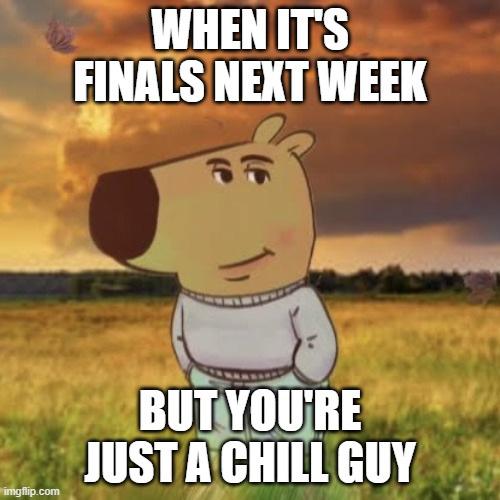
BY ALEKSANDRA SIDOROVA News + Managing Editor
The Student Association Senate discussed last year’s audit report at its Dec. 5 meeting, grappling with the results that suggest the SA should increase the student activities fee further to keep up with its spending habits.
Robert Williams, an accountant with consulting firm EFPR Group, presented key findings from the audit report of the previous legislation’s activity spanning July 1, 2023, to June 30, released Nov. 15.
“You can’t continue to overspend,” he said.
The audit showed that the outlined budget was more than $1 million, with the revenue from students paying the SA fee covered just over half. While the SA spent less than its $1 million budget, largely as a result of clubs spending less than their allocated budgets, the habit of tapping into reserve funds that weren’t spent two years earlier is unsustainable, Williams said.
The audit report also showed that some budgets did not reflect some clubs’ activity. For example, House of Divinity, a modeling club, had a budget of $10,800 but spent only $3,433. Similarly, the Muslim Student Association spent slightly over $1,000 of its $9,000 budget. Plattsburgh Association of Black Journalists had $8,050 in its disposal but spent none.
Williams noted that nationally, student governments spend on average 77% of their budgets on activities, while the SA spent 60%. As such, the Student Association faces the challenge of decreasing its spending to sustain its work while striving to spend more on activities.
The Senate also approved the Laboratory Safety Team, a club dedicated to promoting safety in lab settings. Its members major in biology, chemistry, physics, biomedical sciences and education, club representatives said.
The members said Laboratory Safety Team’s philosophy is teaching without shaming, viewing mistakes as opportunities to learn.

ALEKSANDRA SIDOROVA/Cardinal Points
Sen. Hrudayee Jagtap looks through her copy of the audit report of the previous SA legislation’s activity.
The club plans to collaborate with clubs such as the Cooking Club, according to Sen. John Carguello, chair of the Clubs and Organizations Affairs Board — “for what is a kitchen other than a form of a lab?”
The Senate unanimously approved the club.
Senators also voted to approve Sarah Tansey as a member of the Finance Board. Tansey attended the required three meetings and is a “positive addition” to the board, SA Treasurer Sydney Wise said.
“I am fully behind her,” Wise said.
In her report, Wise said her goal is for the Finance Board to grow from three to eight members by February so they can begin drafting the SA’s budget for the 202526 academic year with Williams’ presentation in mind.
Email ALEKSANDRA SIDOROVA cp@cardinalpointsonline.com
with Cardinal Points
To learn more, email cp@cardinalpointsonline.com.

There
If you see an error in Cardinal Points, email cp@cardinalpointsonline.com.
BY ALEKSANDRA SIDOROVA News + Managing Editor
Student Association senators announced preparations for next semester at the Senate meeting Nov. 20, including accommodating Clinton Community College students when the college moves to the SUNY Plattsburgh campus in fall 2025.
Vice President Sandesh Poudel and Senator Brooke Nagel, who are part of the Ad-Hoc Student Survey Committee established Oct. 23, said they are finalizing the questions and survey design, preparing to send the survey to the campus next semester.
Senator Elizabeth Alden announced she would meet with
College Auxiliary Services to urge them to consider adding dining options on the north end of SUNY Plattsburgh’s campus. Plans for Clinton Community College’s relocation state the college will be moving to Redcay Hall and 133 Court St., currently home to the Center for the Study of Canada.
As of the meeting, the only dining option in that part of campus is Einstein Bros. Bagels in Hawkins Hall, open from 9 a.m. to 3:30 p.m. on weekdays. The club Mail-a-Hug and the Senate navigated a misunderstanding about event dates and budgets.
The paperwork the club originally submitted to the Senate requested $240 for a student selfcare event planned for Dec. 13. The
chosen date was against SA policy, which states the last day of events is Friday, Dec. 6, so the club rescheduled the event to Dec. 4.
Additionally, Senator Nishan Khadgi noted the proposed spending added up to $173 rather than the requested $240. The Senate amended the allocations amount to $180 to account for tax and other costs and unanimously approved the new amount.
Sen. William Donlon said the Activities Coordination Board, which he is chair of, is accepting ideas for events and trips to host in the coming semester.
Email ALEKSANDRA SIDOROVA cp@cardinalpointsonline.com
Continued from page 1
Chris Chamars, coordinator of multicultural initiatives, received an ADHD diagnosis in 2019, at 29 years old. Six months ago, he finally found medication that works well for him.
“It’s a game changer,” Chamars said. He first suspected the condition in sixth grade, when he suddenly went from devouring 200-page books in one sitting to struggling to focus at all.
“I was living more and more in my head,” Chamars said. “I was kind of dissociated from reality. I wasn’t present — most of my life I don’t even remember.”
Saint Michael’s College, where Chamars studied from 2007 to 2011, did have learning support resources, but he didn’t seek them out.
“The stigmatization I had heard and had picked up made me one, say that wasn’t necessary for me because I didn’t have those issues, and two, it made me feel like if I did go and ask for help for those issues, I was admitting that I was deficient in some way,” Chamars said.
Instead, Chamars powered through at the cost of missing homework, forgetting about commitments and struggling to apply the concepts they had been learning. They experienced social and academic anxiety.
“There’s definitely an amount of grief,” Chamars said. “If I had access to this when I was in school, where
would I be now? It feels like I never got to be a student in school. … It was always having to manage things and overcome things, and not just exist and be a student.”
College is supposed to challenge students, but not to a painful extent, Chamars said.
“It’s not supposed to be that hard,” Chamars said. “If you find yourself having a hard time, even if you don’t think you might need help, it’s still worth talking to somebody.”
Around 6% of college students have a learning disability, according to a 2014 survey published by the Council for Exceptional Children. Learning disability evaluations can cost from $500 to $2,500, according to the Learning Disabilities Association of America.
Additionally, a diagnosis can become harder to obtain later in life, Chamars said based on his experience.
There are limited spots for spring screenings, and students who were not selected for spring would be shortlisted for later semesters, according to the Student Digest post by Shatawndra Lister, director of access and opportunity programs.
ARO declined to share further information with Cardinal Points because the office is still working on finalizing the program details.
To apply, complete the Google form at shorturl.at/4uTKW, and reach out to aro@plattsburgh.edu for questions.
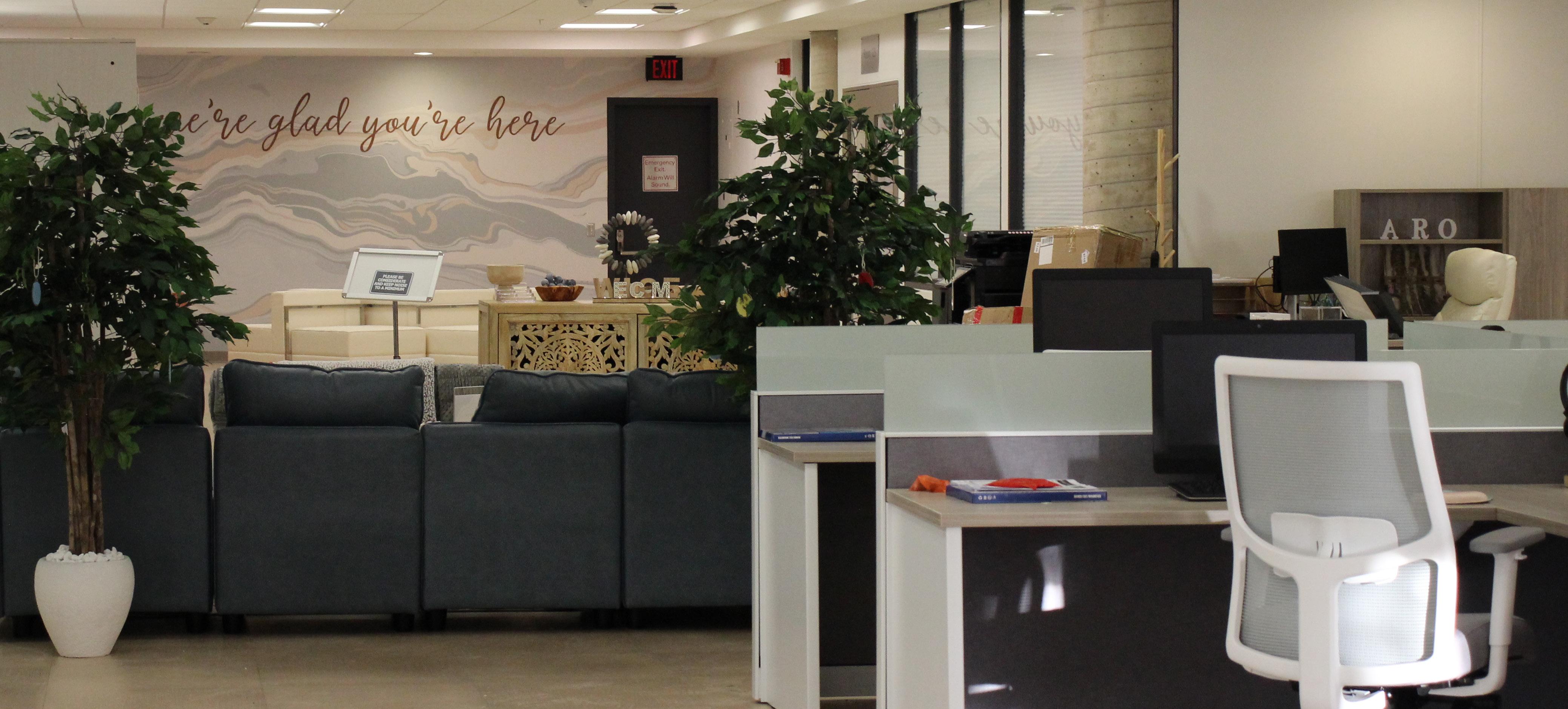
The Accessibility Resource Office also provides space for students to study or relax.
Continued from page 1
That is a 36% increase from last year, President Alexander Enyedi announced in his email to the campus Dec. 2.
Fall 2024 enrollment at Clinton Community College grew by 12% compared to the previous year, and spring 2025 enrollment is on the uptick as well, according to the email.
Financially, Clinton Community College reduced its deficit — the amount by which spending is greater than revenue — by 25%.
“Overall, the stabilization and slight growth in our student enrollment over the past year reflects the collective effort of the campus community,” Enyedi’s email read.
Although enrollment is projected to increase, fewer students are living on campus, calling for a 4% increase in room rent, according to a slide deck released Nov. 21 by Magen
Renadette, interim vice president for administration and finance.
CLINTON COMMUNITY COLLEGE
Enyedi’s email also announced progress in Clinton Community College’s move to Redcay Hall and the Center for the Study of Canada’s current location.
The Middle States Commission on Higher Education reaffirmed Clinton Community College’s accreditation through the 2029-2030 academic year after visiting the area the college will move to. With the Middle States Commission’s approval, renovations can begin.
The second floor of Kehoe is upgrading its flooring and lighting. Flooring installation began the week of Thanksgiving break. Kehoe floors one through four are expected to be fully restored from flood damage by Dec. 20, according to Renadette’s slides. The project costs $500,000.
The 10th floor is getting new walls, flooring and paint as well as upgrades to electrical work,
vents and fire alarms to be completed by Jan. 13, 2025. Undergraduate admissions is expected to move to the 10th floor by the end of the month.
The firm Arnoff Moving & Storage met Dec. 3 with anthropology, sociology and criminal justice faculty to help them prepare for their departments to move by the end of April 2025, starting in late March. Anthropology and sociology are moving from Redcay Hall to Beaumont Hall, and criminal justice is moving from Redcay to Ward Hall.
The building currently housing expeditionary studies and welcoming the Center for the Study of Canada by April 2025 will see new flooring, paint and electrical work.
Updates are posted to the Clinton Community College Transition page on the SUNY Plattsburgh website, which can be reached at plattsburgh. edu/about/clinton/index.html.
Email ALEKSANDRA SIDOROVA cp@cardinalpointsonline.com
Continued from page 1
The slide deck also announced construction projects for the coming few years.
Algonquin Hall will be transformed into an undergraduate admissions welcome center in an $18 million endeavor. Construction is expected to start in May 2026 and end in January 2028. At the same time, Adirondack and Banks will be demolished.
The Ward Hall Counseling Center will have a new look in fall 2025. The project is currently in its design stages, and construction will begin in spring 2025. The project has a $700,000 budget.
From summer 2025 to summer 2027, a $6 million project will repair the masonry on Myers Fine Arts Building and Yokum Hall.
Disability-accessible bathrooms will be installed in Kehoe Administration Building in the year between January 2026 and January 2027. The project’s budget is $2.1 million, and it is being designed.
Beaumont Hall’s and the Service Building’s roofs will be replaced in a $4.7 million project spanning March 2026 to March 2028.
Email ALEKSANDRA SIDOROVA cp@cardinalpointsonline.com
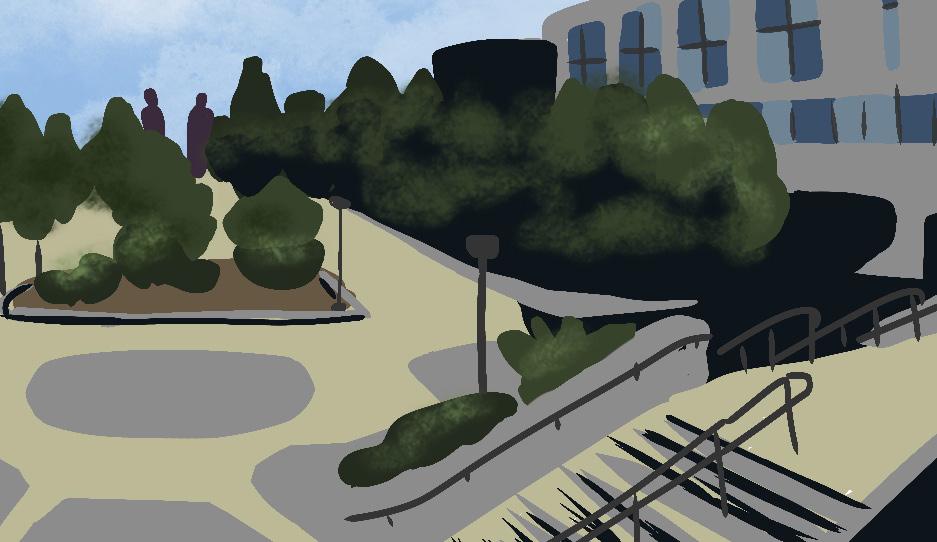


BY CINARA MARQUIS Arts & Culture Editor
From the initial wave of fear and spread of misinformation to the groundbreaking advances in medical treatment, the journey through the HIV/ AIDS epidemic is one of both great struggle and incredible resilience. Personal stories of loss, survival and education illuminated SUNY Plattsburgh this World AIDS Day.
World AIDS Day is an international day held every year Dec. 1 to remember and spread awareness about the AIDS pandemic and HIV. Sometimes creative avenues are employed, such as the AIDS Memorial Quilt, which holds the names of nearly 110,000 victims of the virus. SUNY Plattsburg opted for an intergenerational queer panel in observence of World AIDS day on Dec. 2.
Three queer men sat at the front of the Alumni Conference room to speak about the
impact the HIV/AIDS epidemic had on their life, identity and love. David Landers, a retired Saint Louis Catholic University faculty member, a man who only wanted to be called John who has been HIV-positive for over 30 years, and Marco Ayala, finance and operations administrator of SUNY Plattsburgh’s Student Health and Counseling Center, all spoke on the epidemic.
HISTORICAL CONTEXT
AIDS is the late stage of HIV infection that occurs when the body’s immune system is extremely damaged because of the virus, more than 700,000 people in the U.S. have died from the disease.
“When AIDS first started, how many of you know what it was originally called?” Landers asked. “GRID, Gay-Related Infectious Disease. And they blamed us, and they didn’t do anything because we didn’t count. If it had been 1,200 white tennis players who had died, you believe they would
have investigated everything, but they didn’t.”
The U.S., despite its advancements, still struggles with discussing sex openly, especially queer sex. So, when HIV/AIDS, also dubbed ‘gay plague’ and ‘gay syndrome’ at the start of the epidemic, exploded among the gay community, the disease was thought to affect just gay men. Only after HIV began affecting men who don’t have sex with men and women was the epidemic realized by the U.S. government.
According to the Canadian Foundation for AIDS, research scientists believe that HIV was first transmitted in the 1930s in Africa. Over decades, the disease would spread worldwide, identified as extreme cases of pneumonia and cancers. The disease was finally recognized as HIV/ AIDS in the early 1980s.
The early years of the AIDS epidemic were marked by fear and misinformation. In the early 1980s, many witnessed the rapid decline of loved ones, friends and strangers.
John said he was terrified, especially after his diagnosis of HIV — because he was watching his friends all suffer and then pass away from the disease. John lost two partners to the disease.
Landers, who is 81 years old, said, “We’ve lost an entire generation. And if the young people today don’t understand that that happened then, my fear is they will continue thinking it’s not going to happen to me.”
Educational efforts are crucial in the fight against HIV/AIDS. Colleges have deployed creative strategies to promote safe sex on their campuses, such as supplying condoms in vending machines, bathrooms or residence halls. John explained that historical context is important in educating youth.
“(HIV history is) hard to look at, but it’s something that you have to look at because it can repeat itself,” John said. “But, the thing is, once you’re

aware, you are responsible. And where silence is equal death, silence now means you’re complicit.”
Speakers at the panel mentioned historical figures, including actor Rock Hudson and former basketball player Magic Johnson, who played pivotal roles in raising awareness about HIV/AIDS. Despite these efforts, stigma and misinformation persist, even today. The stigma surrounding HIV remains a significant barrier to education, prevention and treatment.
HIV is transmitted through the exchange of certain bodily fluids, including blood, semen and pre-seminal fluid, vaginal fluids, rectal fluids and breast milk. The virus is not present in saliva or sweat enough to be transmitted. HIV is also not transmitted through feces, urine or insects such as mosquitoes and ticks.
BY ROBIN CAUDELL Press-Republican
Adrian Carr keeps his program under wraps until he delivers “The Seven Words of Christmas” 3 p.m., Sunday, Dec. 8 at the Plattsburgh Memorial Chapel, 100 U.S. Oval. Admission is $15, cash or check only, at the door. “This came about because the Chapel Committee asked me to do another concert,” said Carr, a Grammy-nominated composer and pianist.
BY CINARA MARQUIS Arts & Culture Editor
The Plattsburgh State Art Museum boasts over 10,000 works of art and artifacts. Yet, when you walk into the Myers Lobby Gallery, all you see is trash.
Shoes sprawl across the floor, clothing scraps are scattered along the walls, and plastic waste is strewn around the ceiling. What is this?
The exhibit features props from “The Water Station,” a play without words directed by Julia Devine, lecturer of theater and English, in October earlier. The water station, which previously sustained weary travelers stands tall still, but is now empty and surrounded by waste. Another prop from the performance, a pile of shoes that housed a homeless person, sits nearby.
The Cardinal Foundation Seminars “Creativity for Life,” taught by Devine, and “Fashion and Sustainability,” taught by Erika Guay, associate professor of theater, were involved in creating the props. Devine and Guay collaborated with their students to create set pieces out of collected trash, shoes and thrift store donations.
“The Water Station” was performed in conversation with “Climate’s Shipwreck Ballad” by Robin Lasser and “Transmutation Traces” by Marguerite Perret, an exhibition above the Myers Lobby Gallery in the Burke and Slatkin galleries.
“The set pieces and other trash ephemera now live on in a temporary lobby installation in Myers,” Devine wrote in an email. “It’s an echo of what was and what will be.”
The exhibit serves as a physical manifestation of the themes explored in “The Water Station,” “Climate’s Shipwreck Ballad” and “Transmutation Traces.”
Test tubes are filled with polluted water, calling back to Lasser and Perret’s exhibitions raising alarm to the degradation of Lake Champlain.
The water station surrounded by waste symbolizes the environmental decay caused by human neglect and wastefulness. The pile of shoes, once part of a homeless person’s life, now stands empty — a poignant reminder of the human cost of this neglect.
Students in Devine’s class further utilized trash pieces to create Dada Readymades and illustrations using trash objects. Dada Readymades is an art movement that challenges traditional notions of what constitutes art by transforming ordinary objects into unique pieces. Often these objects are isolated from their original context and given a new meaning.
“Trash or treasure?” Devine asked. “It’s up to the viewer to decide.”
Exhibit-goers are invited to participate by pinning trash onto the wall of the gallery.
This interactive element encourages visitors to active -
ly engage with the exhibit.
Devine wanted viewers to contemplate this act — “Is it art now?”
The exhibit calls viewers to reflect on the nature of art and the potential for everyday objects to be contexualized or recontextualized as something meaningful.
“Just as energy is neither created nor destroyed, we can continually reuse, repeat, recycle, return, renew and remake,” Devine wrote.
The exhibit at the Myers Lobby Gallery is more than just an art installation, it’s a call to action, urging us to rethink our relationship with waste and to recognize the hidden histories and meaning in the discarded. By showcasing the work of students and highlighting the intersection of art and sustainability, the exhibit challenges us to consider the broader implications of our consumption and the vast possibilities for creative reuse.
For more information about the exhibit and upcoming events at the Plattsburgh State Art Museum, visit it’s website at plattsburgh.edu/ plattslife/arts/art-museum/ index.html

Continued from page 4
that you don’t have the support system that you would have when you go and get it tested, and there’s someone else in the room,” Ayala said. “However, I think that also, it’s a sign of the times, in the sense that, fortunately, a positive diagnosis is no longer a death sentence like it used to be in the 80s.”
The concept of “Undetectable = Untransmittable” (U=U) is significant today as well. Through antiretroviral therapy, a combination of HIV medicines individuals who are HIV-positive can gain an undetectable viral load and cannot transmit the virus to others. Understanding U=U can significantly reduce stigma and encourage more people to seek treatment.
Individuals with undetectable viral loads of HIV can have unprotected sex as well as carry and give birth to children without transmitting the virus.
Advances in HIV treatment have transformed the virus from a fatal disease to a manageable chronic condition. Not all have access to these treatments, however.
Despite progress, significant challenges remain. The cost of HIV medication is a barrier for many.
“My HIV medication retails at $3,500 a month, but I get it at no cost because of my healthcare coverage,”
one of his biggest fears is to lose health coverage — with the election of Donald Trump as president, he believes that’s likely coming.
The fight against HIV/AIDS intersects with broader social justice issues. The persistence of stigma, especially within marginalized communities, underscores the need for comprehensive education and policy changes, said Landers.
The U.S. government requires HIV testing for people applying for a green card or citizenship. This requirement can impact an applicant’s status, as the federal government can deny a green card based on an HIV-positive result.
According to the Centers for Disease Control and Prevention, more than 1.2 million people are living with HIV in the U.S. and there are an estimated 31,800 new infections as of 2022.
“We’ve come a long way since the early days of the epidemic. The community has shown incredible strength and solidarity,” John said. “As long as we continue to support each other and push for progress, there’s every reason to be hopeful for the future.”
For more information on HIV testing and resources, visit the CDC’s website at cdc.gov/hiv/index.html.
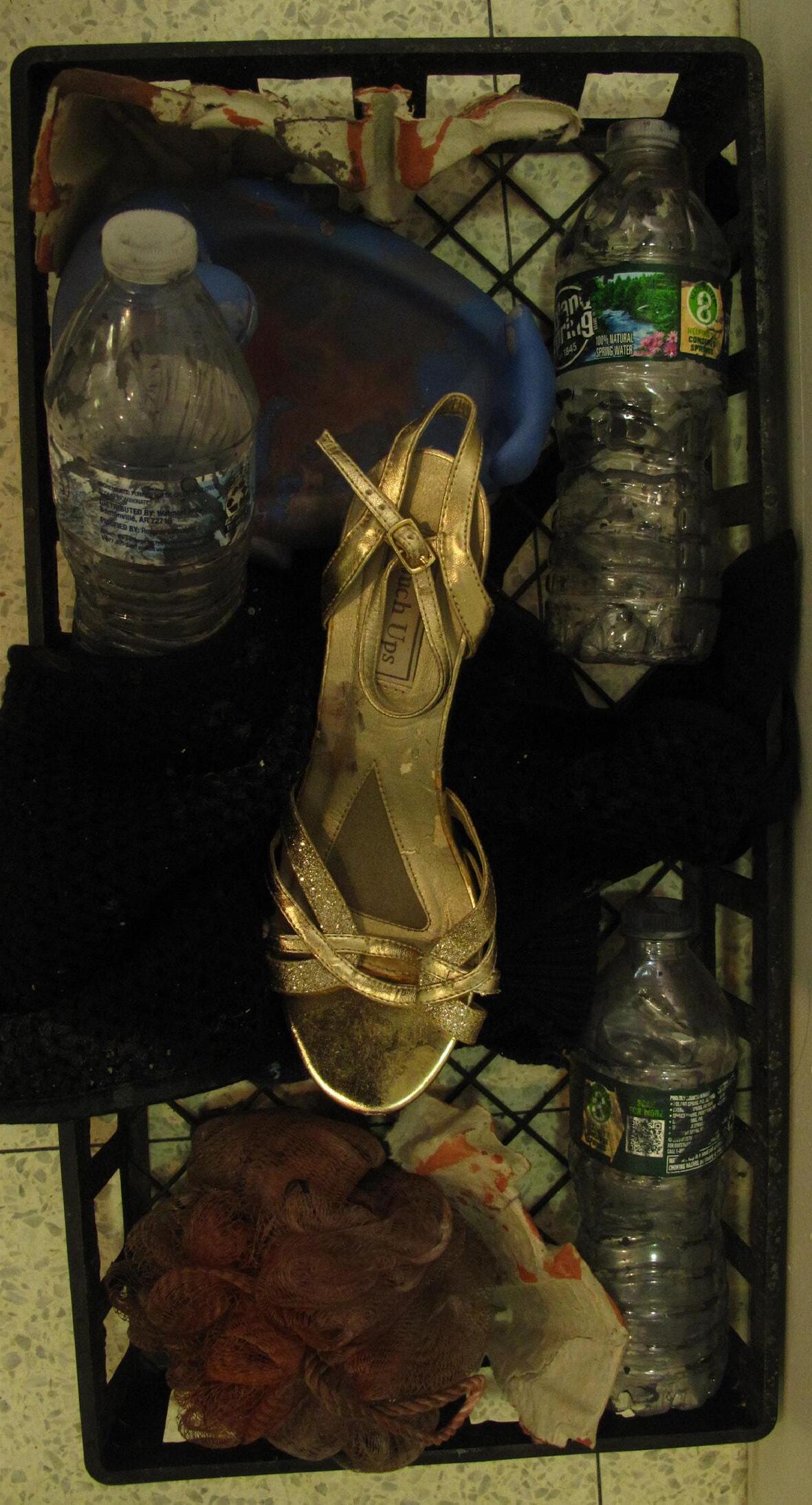
GALLERY > 6
Continued from page 4
“My holiday journey started in 2011 because I came out with my Zen Christmas album. That was kind of like new age renditions of some of my favorite holiday songs.”
For him, Sunday’s concert is a great opportunity to incorporate his Zen Christmas carols and pieces into the concert as well as his regular repertoire.
“So, it became a big challenge to do that first of all,” he said.
“Then, I kind of mixed the metaphors because there are the seven last words of Christ, and then there’s Christmas. How about if I came up with the seven words of Christmas? So, I came up with my list. The list kind of changed as I started working with it. At the concert I’m going to reveal my list of the seven words of Christmas. It’s a mystery until Sunday.”
Carr has never performed these songs in concert, so this is his world debut.
“It’s kind of my first Christmas concert that I’ve really ever done,” he said.
“It’s kind of new and hope that it becomes kind of a tradition here at the Chapel where I can come back every year and do like a little Christmas concert. I would love that. It’s kind of a new thing for me, and it’s the first time I’m incorporating these songs.”
“It was real holiday inspiration,” he said. “I started in November. By the middle of November, I had it out on iTunes. It was a momentary inspiration. I said, let’s go for it. I wanted to do something different because we all hear the same Christmas songs with the same arrangements with the same artists. Sometimes you kind of miss the beauty of these songs, and so I really wanted to try to bring out the simplicity and the beauty of the songs that I chose.”
Carr will merge four Christmas songs in Sunday’s concert.
“Probably the most storied one is ‘Silent Night’ because in World War I it brought an armistice to the troops on Christmas Eve,” he said.
“That to me is just really inspiring. I wished we lived every day in ‘Silent Night’ where we could just be at peace with our enemies and sing together. That’s going to be the last Christmas carol on the program. That’s got to have a special significance for everybody. It doesn’t matter what religion you are because it’s just music and the ideas.”
It’s the perfect song to be performed in the Plattsburgh Memorial Chapel. Churchwomen’s Committee built the chapel as a memorial to the graduates of the Plattsburgh Military Training Camps “Plattsburgh Idea,” who died during World War I.
Carr will perform on the Chapel’s Steinway piano.
“It’s a beautiful place to see a concert because the acoustics are very wet,” he said.
“It’s just such a lovely place, and they still have the alert there at the front of the chapel in case the servicemen had to leave. It’s really a historical place. It preserves the history of what happened actually there and what happened here in Plattsburgh.”

FRIDAY 12/6
“Winter Celebration” Concert Choir
Timothy Morningstar brings a variety of choir songs to the stage. Event is free and open to the public.
Giltz Auditorium from 7:30 to 9 p.m.
6 - 8
SUNDAY 12/8
“A Down Home Soulful Christmas” Gospel The Plattsburgh State Gospel Choir will feature jazz and blues singer, Alexis P. Suter, and host, Danielle D. Criss, alumna of 2022. Tickets can be purchased on Cardinal Link.
Giltz Auditorium from 5 to 7 p.m.
The semester is nearly over. Don’t forget to stay hydrated, eat full meals and snacks and sleep. Stay warm!
Continued from page 5
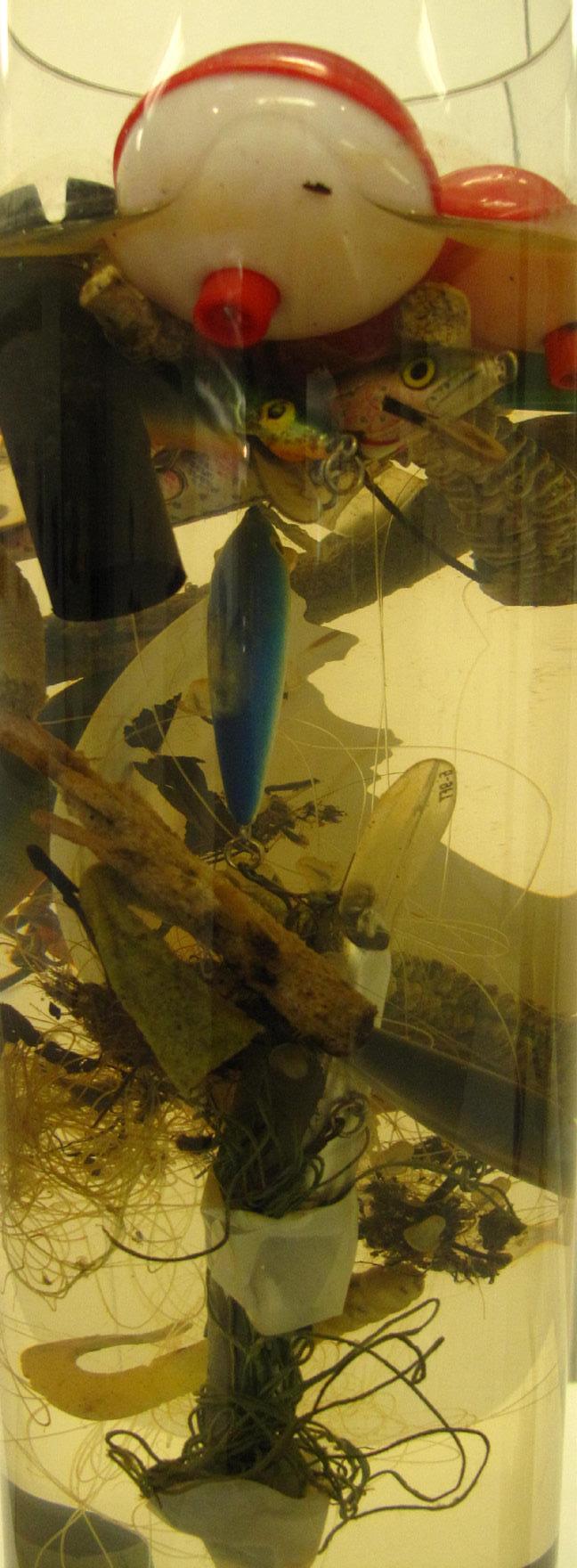
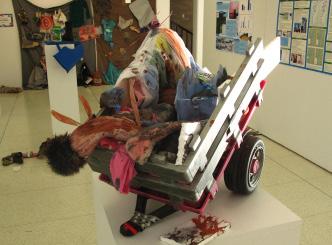






The Sun card represents positivity. Your hard work is now being rewarded with joy and contentment. You deserve this, let yourself reap the benefits.
The reversed World card signifies delays. This week may not go how you planned. Mourn, but do not let your disappointment consume you — there is always more for you out there.
The reversed Temperance card depicts an imbalance. You may be making reckless, rushed decisions in your life and struggling with stability. Take control of your impulsive behavior and express moderation.
The reversed Empress card is about smothering. You may be feeling a sense of burnout this week, take some time to nurture yourself.




The Moon card signifies intuition. Trust your instincts and be mindful of deception this week. You are equipped to face your fears, so let yourself face them.
The Hermit card refers to contemplation. Think carefully this week and make space for learning. There will always be something to learn.
The Lovers card refers to passion. Possible romantic partnerships are blooming this week. Harmony will follow you everywhere.
The reversed Hierophant card suggests unfaithfulness. Challenge common beliefs and question everything this week. You can create your own values and traditions.




The Star card represents certainty. A wave of calmness and a renewal of strength will help bring positive energy into your life. The future ahead of you looks bright.
The Strength card depicts determination. You are aware of your inner strength and use it to your advantage. Be confident in your personal power and commit yourself to your goals.
The Magician card refers to strong will. This card encourages you to take time to make clear what you want in your life and strive for it.
The reversed Trial card refers to hesitation. Embrace flexibility and new perspectives this week — it will help you move forward from any uncertainty you are facing.

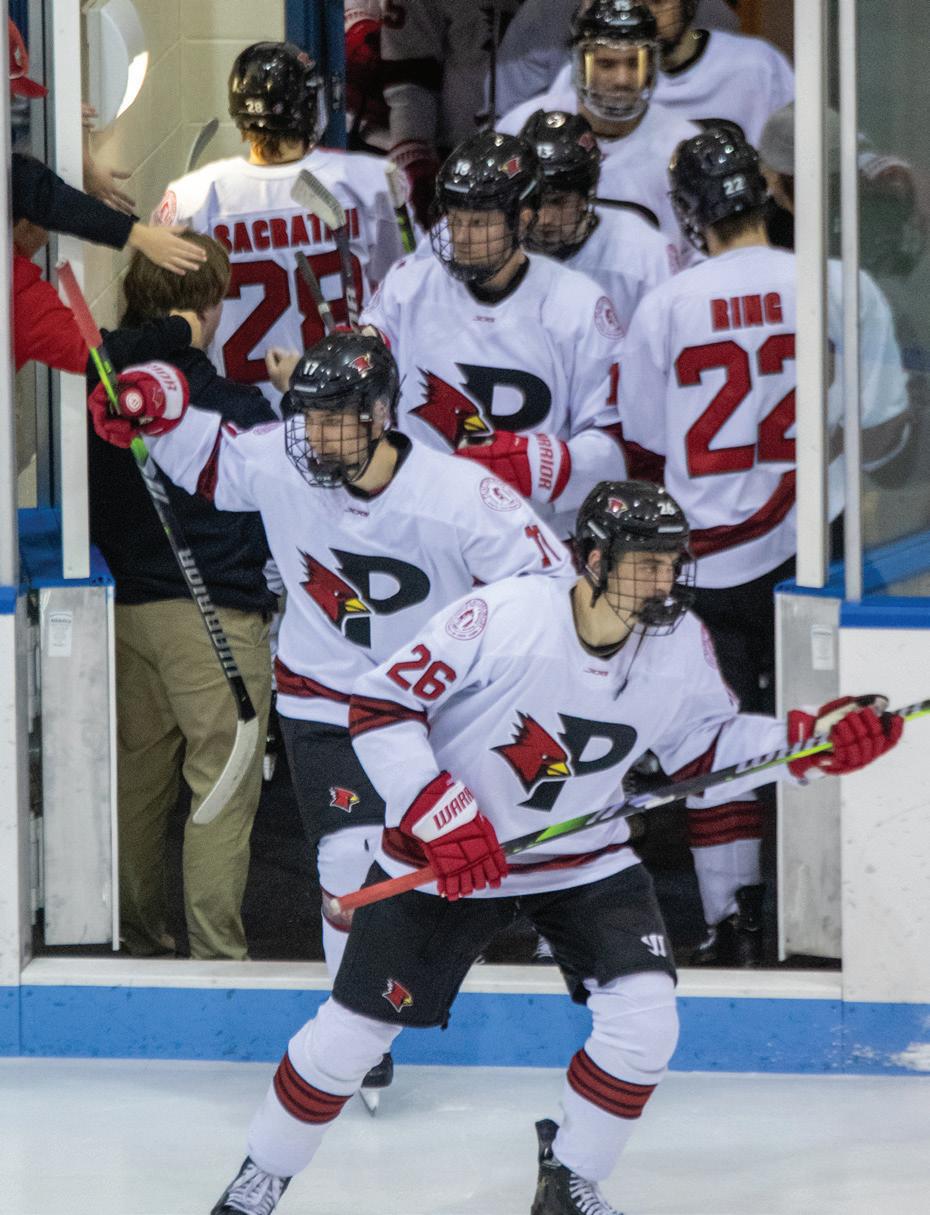

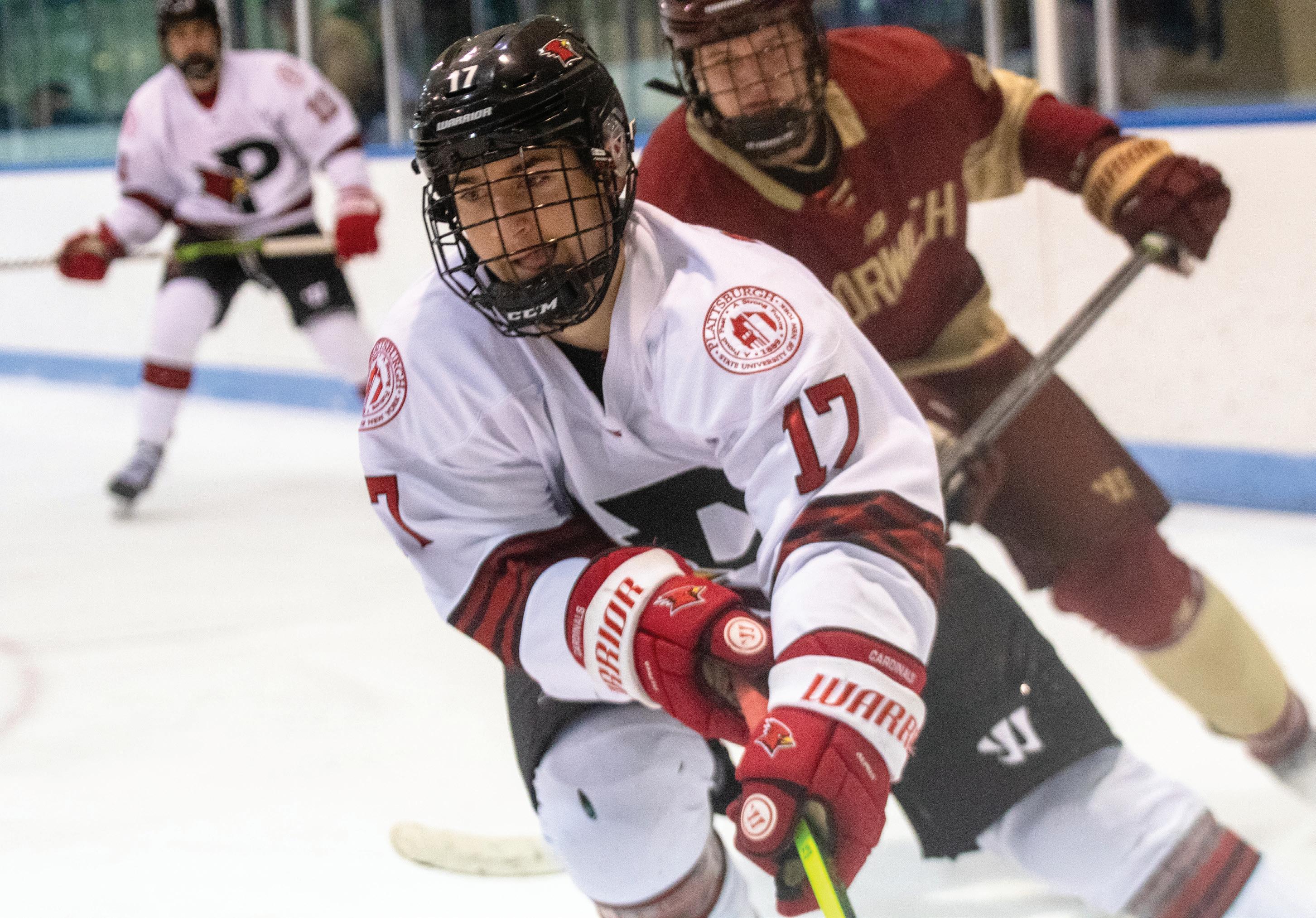

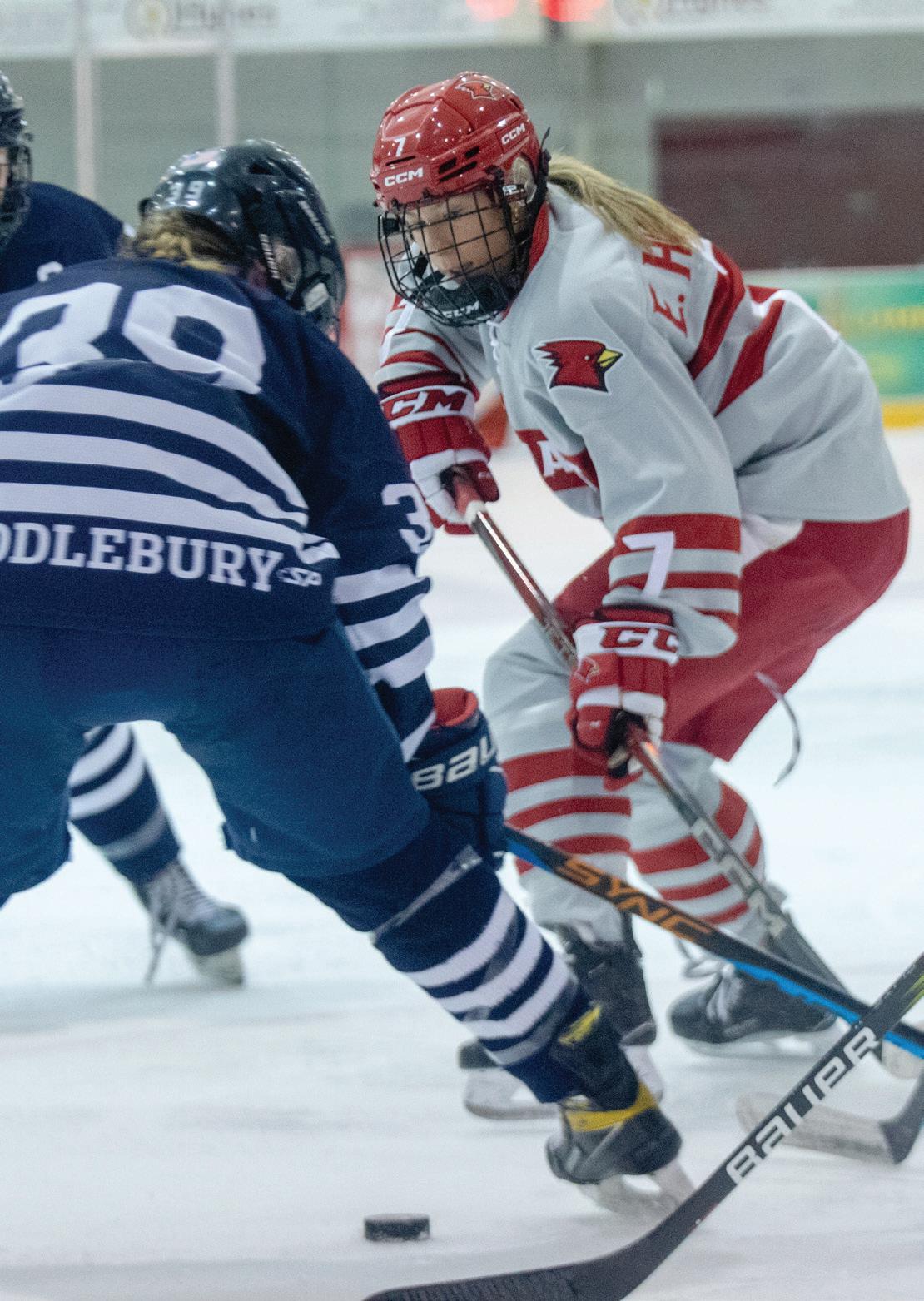



Houle

Houle’s
Houle’s
Houle’s first back-to-back
Houle’s
Kevin Houle, head women’s hockey coach, won his 500th game after defeating Canton 3-1 on Nov. 22.
Houle, a former men’s hockey assistant, was hired to lead the women’s team in 2003.
As head coach, he’s won 502 games, earned 12 conference titles and won seven national championships.
Houle has won the most career games of any women’s hockey coach since the foundation of the sport in Division III.
Houle’s
Houle
Houle’s
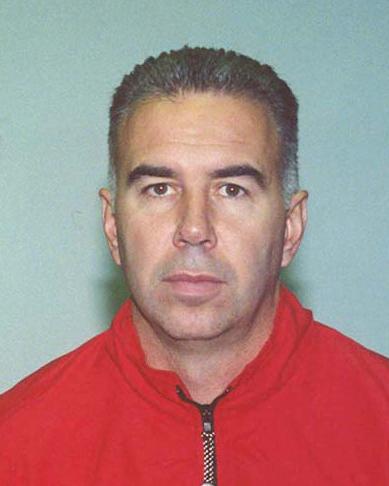
via Plattsburgh Athletics
Kevin Houle, 2003
Houle’s
BY COLLIN BOLEBRUCH Editor in Chief
Approaching winter break, Plattsburgh men’s hockey knows its learning has to translate into winning soon. It made progress in losing last weekend.
“Honestly, I thought it was one of our better games,” head coach Steve Moffat said. “We just came out on the short end of the stick.”
The Plattsburgh Cardinals (4-4, 2-2) lost 0-1 to the Norwich Cadets (3-3-1) in the opening round of the LayerEight Shootout at Chip Kenyon ‘85 Arena in Middlebury, Vermont on Nov. 29. Plattsburgh then won 5-3 over the Marian Sabres (4-4) in the consolation game Nov. 30.
The hosting Middlebury Panthers (4-2) then won the tournament with a 2-0 victory over Norwich.

Plattsburgh entered the weekend as backto-back reigning champions. For the first time since 2019, the Cardinals lost the first game of the annual tournament.
NORWICH
Since the hiring of Moffat, the Cardinals have gone 2-6-2 against the rival Cadets, including a 1-2 overtime loss in the 2023 NCAA First Round. Platts-
burgh’s wins came in the 2022 and 2023 Shootouts.
Friday’s loss was the first time Plattsburgh was held scoreless against Norwich under Moffat.
The Cardinals allowed the least scores and shots in a loss this season.
Graduate defenseman Kevin Weaver-Vitale said the performance was the result of hard work.


BY MICHAEL PURTELL Sports Editor
From an overtime win to a shutout loss, the 2025 Cardinal/Panther Classic was a roller coaster ride for Plattsburgh State. Last weekend marked the annual women’s hockey Cardinal/Panther Classic, a two-day tournament hosted by No. 6 Plattsburgh State featuring Division III rival No. 3 Middlebury. In the tournament’s first round, the Cardinals faced off against the unranked St. Norbert Green Knights and took a 2-1 overtime win. On day two, the titular teams faced off for championship, where the Middlebury Panthers completed a 4-0 win over Plattsburgh.
“(Middlebury’s) a big team, a fast team, a talented team,” head coach Kevin Houle said. “They’re a tough opponent.” Middlebury shutout the Cardinals at Ronald B. Stafford Ice Arena for the second time in ten months. Plattsburgh has only ever been shut out at home one other time, by Elmira College in 2008.
ST. NORBERT St. Norbert entered the tournament without a loss on its schedule, and was the first team left off of the United States College Hockey Online’s poll for the top 15 DIII teams.

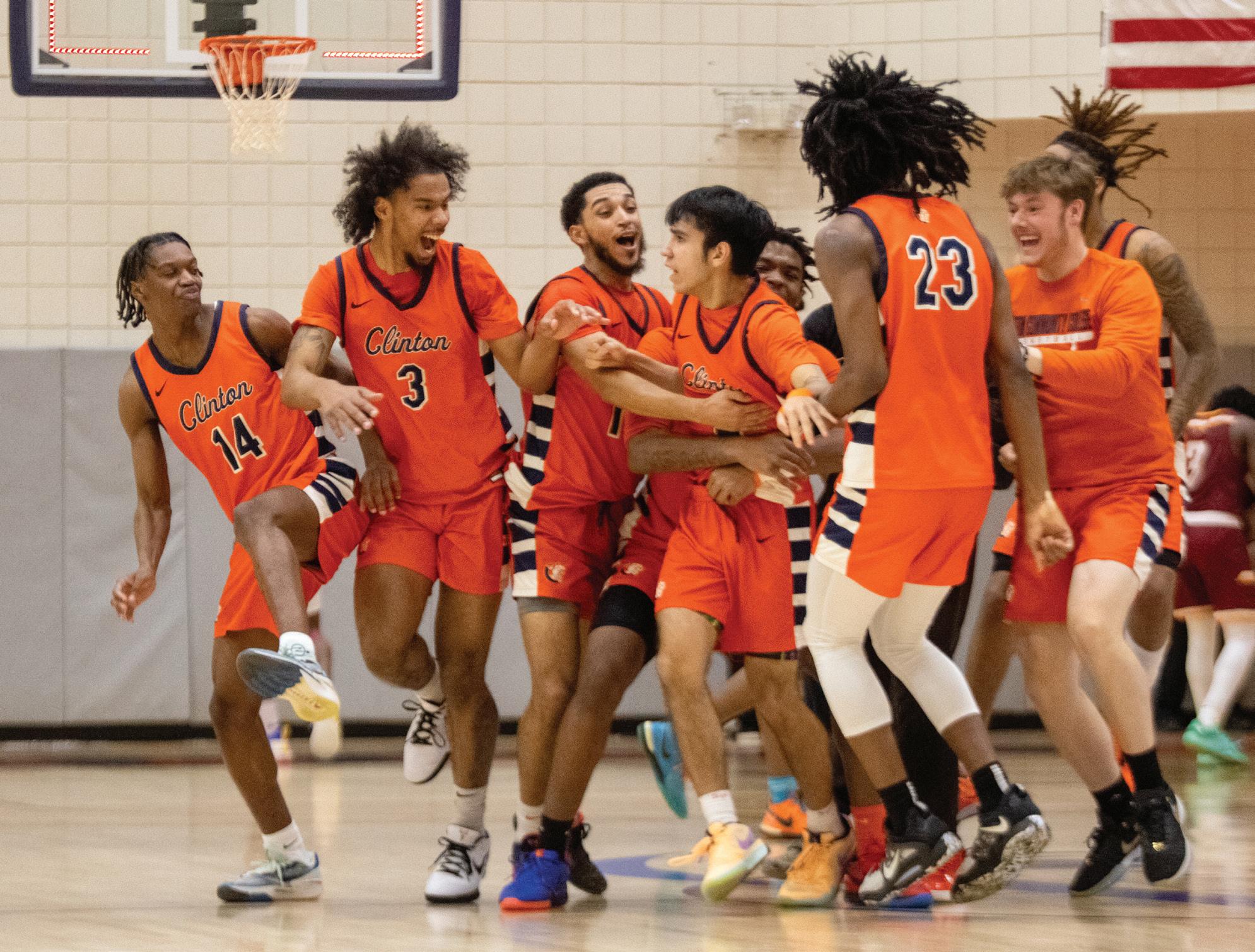
BY JUSTIN RUSHIA Associate Sports Editor
The SUNY Plattsburgh and Clinton Community College campuses are only 10 minutes apart. Starting next year, the schools will even share a campus, yet their men’s basketball teams have never officially taken the court against each other.
Both programs have considered the possibility of a cross-town matchup, but the teams have never faced off.
“I’ve been trying to scrimmage them the last couple years, but we just haven’t been able to make it work,” said Neil Epstein, Clinton County head men’s basketball coach.
According to head coach Mike Blaine, Plattsburgh State, an NCAA DIII program, is allowed only two scrimmage or exhibition games per season. This season, Plattsburgh has only used one against Division I University of Vermont.
“From a scheduling standpoint, we’re looking to play regular season games against other fouryear institutions,” Blaine said.
“Unfortunately, we are more limited than they are in the number of preseason opportunities that we have.”
Blaine said the only way the cross-town teams could matchup is if Plattsburgh dropped one of their series or scheduling circumstances were altered.
“I’m not one who’s usually apt to drop historical series,” Blaine said. “But that’s certainly something we’re willing to explore if need be.”
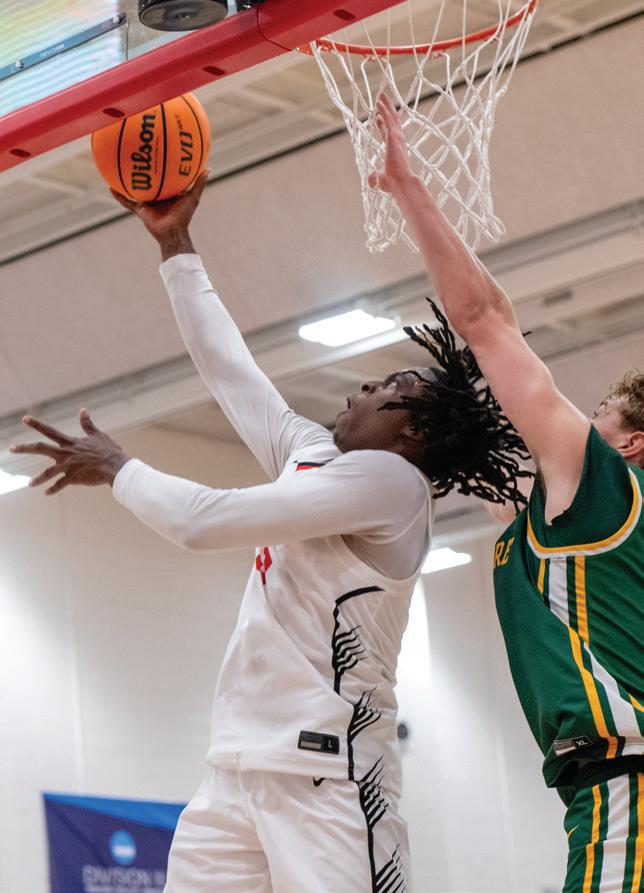
Blaine and Epstein are both from the Washington D.C. area and have both made moves to the North Country to take on coaching positions.
“I’ve known coach Epstein for a while,” Blaine said. “I’m glad to see the job he’s doing, revitalizing their program and keeping some highquality players on board there.”
Clinton Community will often recruit players from the North Country area. Blaine says that having a successful two-year program like Clinton allows them to see how some of these players and players from other schools will develop at the collegiate level for some closeto-home potential recruiting.
Next year, Clinton County will move onto Plattsburgh’s campus and into Redcay Hall.
cilities. At the moment, Clinton County will still practice and play games in its home gym.
“We have not been made privy to anything from an adjustment standpoint,” Blaine said. “There’s way more questions than answers right now. We’re just kind of waiting to see how things shape up.”
With the two teams located so close to each other, it’s common for players from both squads to play each other in pick-up games during the off-season.
This has sparked an unofficial rivalry between the two teams.
“We’re literally right next to each other. So I feel like there’s definitely going to be some competitive animosity,” said Victor Dueno, Clinton Community player.
Both coaches acknowledged that they were aware of the pick-up games and the competitiveness of the two teams, but weren’t privy to the personal relationships between the two squads.
“I’m sure they want to play us — from what I’ve heard,” Plattsburgh State player Ikechukwu Ezike wrote in a text.
With the potential for a matchup being discussed each season, the players naturally have considered who would win such a game.
“I obviously think that we’d win,” Dueno said. “But I definitely feel like it would be a close game.”
Not everyone agrees.
“I’ve heard they don’t think we are good — and that’s fine — but I won’t be talking any slander,” Ezike wrote. “I know we would beat them.”
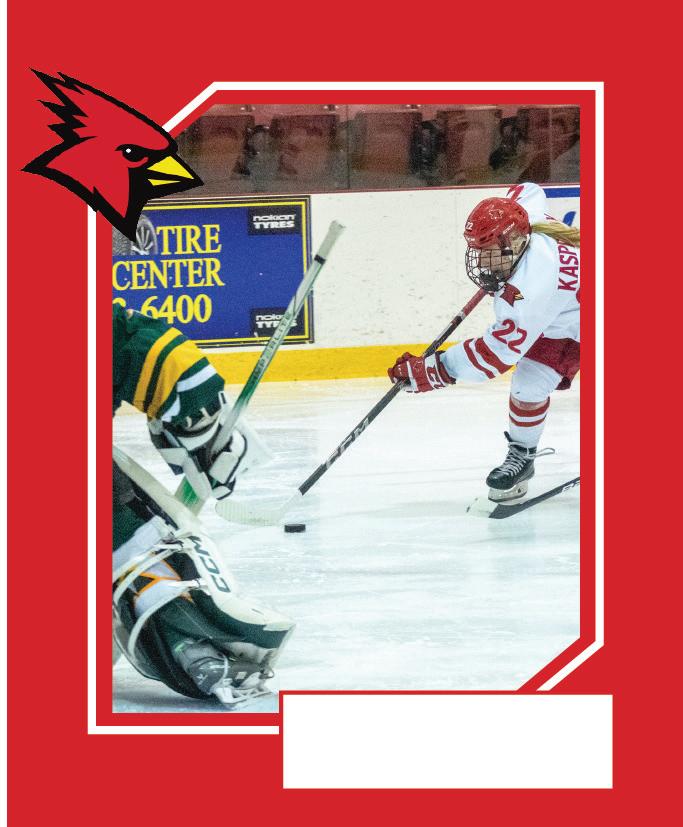
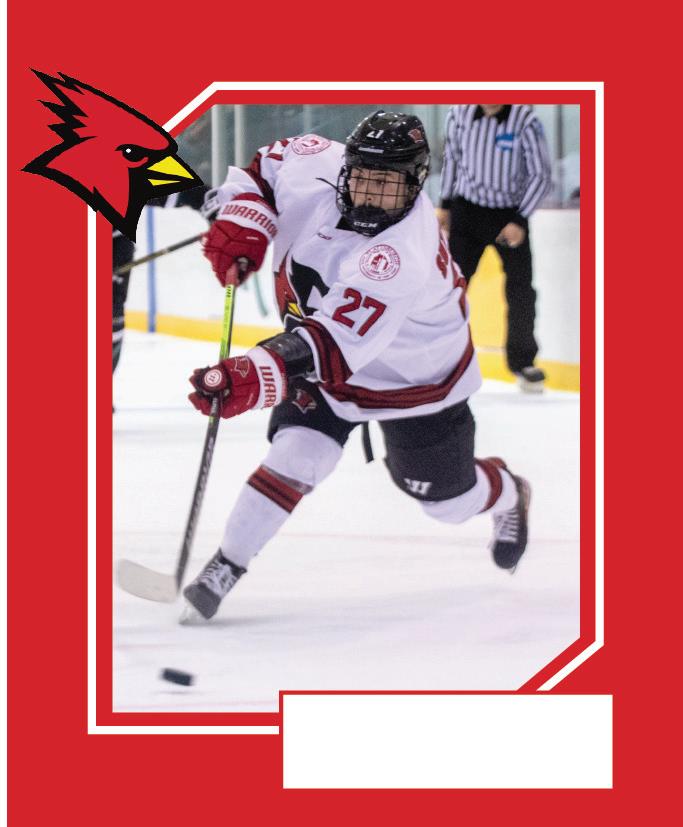
The connections between the teams run a lot deeper than you might think.
Epstein said that the relocation does not mean that the team will primarily use Plattsburgh’s athletic fa-

Plattsburgh (4-4, 2-2), Cortland (6-3, 3-1), Oswego (3-4-2, 3-1) and Buffalo State (6-2, 4-0) — yes, Buffalo State — have all gotten United States College Hockey Online and D-III Hockey News poll votes. With tons of games left to play, I’d like to take a look at the teams that have stood out so far.
The Buffalo State Bengals have been surprising after finishing last season 4-10-2 in the conference. This season, the Bengals finished their November SUNYAC games 4-0.
Most notably, Buffalo State defeated reigning SUNYAC Champions Cortland by a score of 5-3 on Nov. 16 and Oswego by a score of 2-1 in overtime on Nov. 22.
The Bengals didn’t come close to winning the shots battle in either game, and both came down to the wire. Buffalo State doesn’t look like a typical SUNYAC contender, but it very well could play spoiler.
BY COLLIN BOLEBRUCH Editor in Chief
Having reported on SUNYAC sports for three years now, I want the sports section to expand beyond Plattsburgh. In this column, I will explore membership issues, rivals’ seasons and the conference the Cardinals call home.
I don’t think a single person could have predicted what the SUNYAC men’s hockey standings would look like at this moment. With one more weekend to go before winter break, it’s clear that this season is going to be a dogfight.
Buffalo State has never won a SUNYAC Semifinal game, but so far we’ve seen anything can happen — especially when two playoff spots have opened this season.
Oswego and Plattsburgh spent time ranked, but now Cortland is the lone SUNYAC team to be in the top-15 at 14 from USCHO and 13 from D-III Hockey News.
The Dragons have played three ranked out-of-conference games. Cortland lost 3-5 to No. 2 Adrian on Nov. 8 in a game that was tight until the third. Last weekend, Cortland split No. 5 Curry twice, winning 8-3 and losing 1-5. Cortland is capable of keeping games close nationally.
Continued from page 8
“I think we finally bore down with our defensive structure,” Weaver-Vitale said. “We’ve been working on it a lot in practice.”
Plattsburgh went scoreless on two power plays, while Norwich’s winner came from one of its two attempts.
Plattsburgh led in shots 30 to 23, recovering from a five to 13 first period. Over the second and third periods, Plattsburgh led 25 to 10.
Senior Jacob Hearne started in net, saving 22 shots. Sophomore Eli Shiller missed the previous three games and Hearne has stepped in as the lone starter.
Three forwards — seniors Luk Jirousek, captain, and Jagger Benson and junior Joshua Belgrave — also missed the contest. Jirousek has been absent with an injury since Nov. 16.
“Everyone knows how to play hockey on our team,” Weaver-Vitale said. “It’s a good opportunity for the freshmen to jump in and learn and play in big games.”
During the first period, the Cardinals did too much deliberating, Moffat said. Plattsburgh didn’t register a shot for the first nine minutes.
“I thought we had a lot of good chances in the first — we just didn’t shoot the puck,” Moffat said.
The first intermission marked a turnaround in the Cardinals’ aggression, as they shot 14 times in the next period.
“We finally started to shoot a little bit more and create some more offense,” Moffat said.
The third period looked even better for Plattsburgh defensively, allowing just four shots. The final stanza saw three of four total power plays.
At 13:17, junior forward Jake Sacratini committed an interference penalty, giving Norwich another two minutes man-up. Plattsburgh held Norwich shotless for the first 1:45, until the Cadets scored the game-winner on its first attempt on net.
“We can’t take a penalty with six minutes left,” Moffat said.
Hearne was pulled for the final 1:37 to no success.
“That’s a step in the right direction,” Moffat said. “I thought the
Continued from page 8
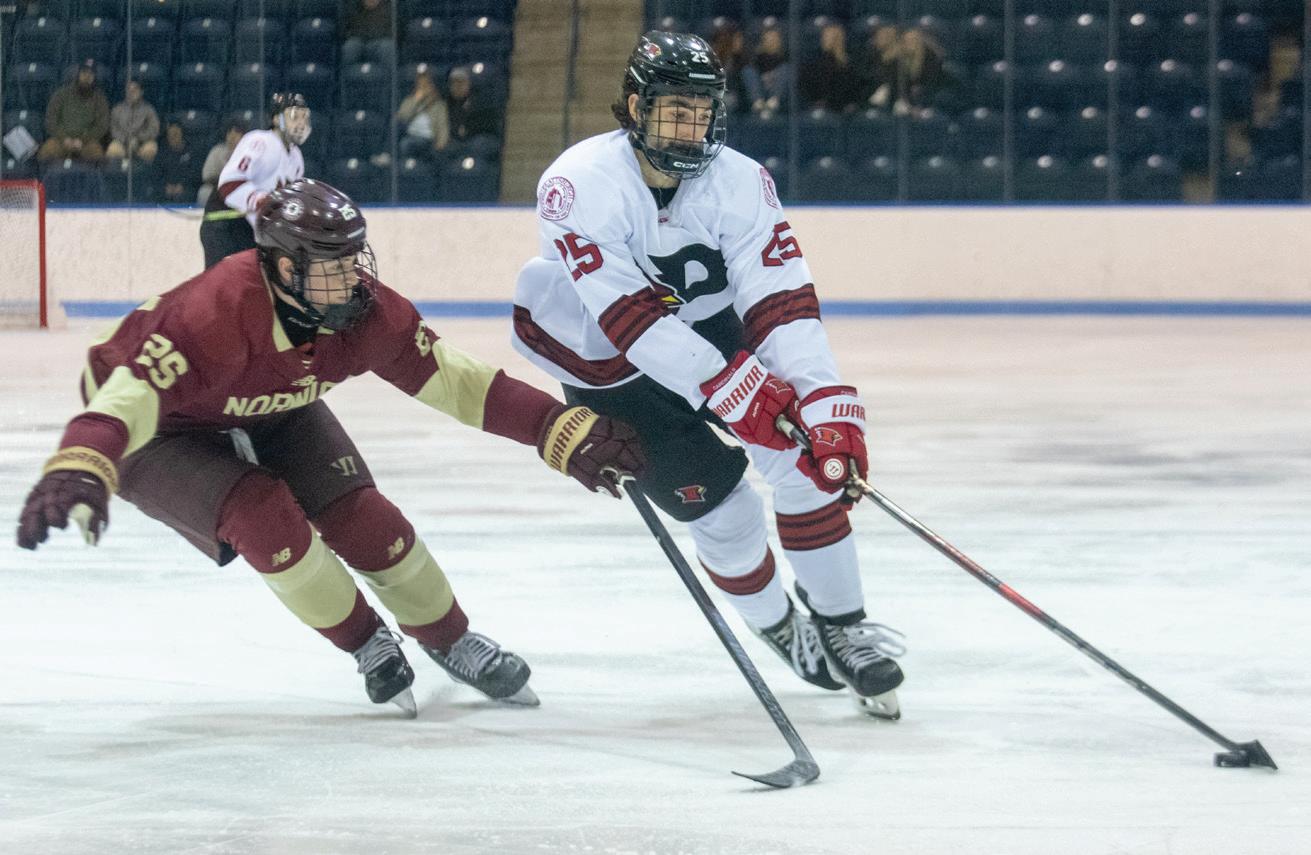
effort was there. I thought the energy was there. I thought the emotion was there. I’m pleased with that.”
Since Marian men’s hockey was founded in 1995, the Sabres and Cardinals had never faced off prior to Saturday.
Junior forward Riley Sutherland stepped up offensively with two goals — matching his career total. Plagued by injuries, the Cardinals have had to rely on its down-thebench players for scores.
“I thought guys stepped right up and played really well,” Moffat said.
Additional scorers included sophomore forward Aaron Catron, unassisted, rookie forward Patrick Cole — his career first — and senior defenseman Jack Ring.
Rookie forward Brody Spencer-Ha tallied three assists, including the initial and game-winning goals.
Sutherland, Benson, rookie forward Blake Hall and junior defensemen
Lonan Bulger and Brannon Butler all added an assist each.
Plattsburgh didn’t score on its lone power play and killed three of four penalties. Marian outshot Plattsburgh on the day 38 to 32.
Hearne started again, recording 35 saves — a season-high.
Sutherland scored the game’s first goal just 49 seconds in. Marian responded at 4:53 on the power play for the second man-up goal allowed for Plattsburgh this weekend.
Two more Plattsburgh goals before the 10-minute mark put the Cards up 3-1 early in the game, forcing Marian to switch goalies.
Marian cut into the margin before the end of the first period, scoring
Plattsburgh was the first team ranked within the top-10 the Green Knights have faced this season.
The first period was a grueling fight from both defenses as neither team allowed a goal.
Plattsburgh narrowly led the way in shots 10 to nine, but St. Norbert’s offense was generating clean looks, including four shots off of a power play.
Thankfully for the Cardinals, sophomore goaltender Chloe Lewis was everywhere.
“She was unreal,” senior forward Bridget Orr said. “I’m so happy she was in net for us, because she’s just a phenomenal goalie.”
Lewis ended the game with 22 saves, including four in overtime.
The tone of the game shifted heavily after the first intermission. The Cardinals were determined to widen the gap in shots. Plattsburgh’s skaters seemed to move faster, play bigger and hustle harder throughout the second 20 minutes. The effort resulted in a 1-0 lead.
Sophomore forward Emily Kasprzak punched the puck into the net off of a deflected shot from first-year forward Kayson Ruegge. Ruegge and fifth-year forward Ciara Wall recorded assists on the play.
“We were just getting the team fired up. We wanted to win, so we came out and did everything we could,” Orr said.
The third period was the Green Knights’ chance to rally, and late in the game they found what they needed. With four and a half minutes left, a Green Knight found the puck on a breakaway and got Lewis in a one-onone. St. Norbert found the back of the net, and the Cards were unable to find a second goal in the short time left.
In three-on-three overtime, St. Norbert struck first and struck hard, rifling multiple shots on the Plattsburgh net. It was Lewis coming
on Hearne at 17:16. The Sabres built on that momentum, tying the game 2:28 into the second.
The Sabres again went on the power play at 18:16. Sutherland flipped the script and scored short-handed.
Plattsburgh has four short-hand goals this season compared to three on the power play.
“Our power play needs a bit of work, but it’s coming along,” Sutherland said. “We’ve had a solid penalty kill. We’ve been really gritty.”
Ring put in one more for extra insurance to give Plattsburgh the win. The Cards have now gone 1-1 in three consecutive weekends.
The Cardinals have a chance to get back on the upturn with two SUNYAC games this weekend ahead of the team’s winter break.
Plattsburgh hits the road to play the Fredonia Blue Devils (3-7, 1-3) on Dec. 6 and the Buffalo State Bengals (5-2, 4-0) on Dec. 7.
The Bengals have been impressive this season, defeating both Cortland and Oswego, earning United States College Hockey Online poll votes along the way.
Sweeping their first weekend of the season would go a long way in getting back on the right track.
“We’re going to have to start winning,” Sutherland said. “We’re a young team but we’re coming along. I think after this game, we’re turning the corner.”
Email COLLIN BOLEBRUCH cp@cardinalpointsonline.com
Continued from page 9
At the SUNYAC level, the Dragons’ loss to the Bengals was disappointing, but it wasn’t a bad game from Cortland.
In the SUNYAC Championship rematch, Cortland took down Plattsburgh by a score of 3-1. Statistically, the game was close, but Cortland held the two-goal lead for 26 minutes.
The Dragons haven’t seen the Oswego Lakers yet, but it’s going to be a good game this weekend.
Cortland should be viewed as the favorites to repeat at this point, despite SUNYAC voters placing both Oswego and Plattsburgh higher in the preseason polls. There’s still a lot of season to go, but the Dragons haven’t gone anywhere.
OSWEGO
Oswego has not done itself any favors, playing seven vote-receiving teams so far this season. The Lakers have a losing record right now that’s sure to even out. Oswego opened the season 0-2-1, losing 2-5 to No. 1 Hobart on Nov. 1 and 2-4 to No. 2 Adrian on Nov. 9 and tying 0-0 to No. 10 Elmira on Nov. 2. That’s one hell of a gauntlet.
During its annual Whiteout Weekend, Oswego defeated visiting No. 12 Plattsburgh by a score of 5-1. A decisive win, it was also one the Lakers needed badly. The next weekend, Oswego lost to Buffalo State. Like Cortland’s game, it was unlucky and a lesson for the Lakers to clean up.
Last weekend took me by surprise, when the Lakers finished 0-1-1 against preseason ranked teams in Utica’s tournament. Oswego lost 3-4 in overtime to Stevenson and 4-4 in shootouts to the University of New England.
The Lakers remain a serious threat at the SUNYAC title, but is that as far as they can go? Their results at the Utica University Tournament were simply discouraging.
The Plattsburgh Cardinals have not been the team I thought they would be at all during its fall semester. With a returning defensive core, I didn’t think their D zone coverage would need as much work as it does. Injures have also hampered the Cards.
Against teams to receive USCHO votes, Plattsburgh is 0-4, most recently losing to Norwich in the LayerEight Shootout Tournament by a score of 0-1 on Friday.
It’s been a rough first eight games, but the Cardinals showed improvement in the Tournament loss. The upcoming break will be important for recovery and restrategizing.
I have faith the Cardinals can get back on track thanks to their good group of veterans and strong coaching staff. If their 2025 campaign is stronger, they’re just as competitive as anyone for the SUNYAC crown.
Email COLLIN BOLEBRUCH cp@cardinalpointsonline.com

up big, which allowed the Cardinals momentum heading the other way.
Orr flew up alongside the benches with a Green Knight on her hip. She held the puck until she was right in the goalie’s face, and popped the puck into the top right corner of the net.
“I thought ‘OK, I just got to put it in the net,’ and luckily I did,” Orr said.
MIDDLEBURY
The championship game featured a rematch of last year’s Cardinal/Panther Classic. The results were much different.
The Panthers opened with hard physical play, but for much of the first period the Cardinals looked just as strong. The Cardinals jumped to an early shot lead, recording six shots in less than two minutes, but were unable to capitalize on the looks.
“I thought at times, especially in the first period, we dominated that game. We needed to come out of that period at the very least even, and we had nothing to show for it but being down two goals,” Houle said. “That’s hockey sometimes.”
Middlebury’s shots, while in much lower volume, were of higher quality. Many early shots came from lapses in the Plattsburgh defensive zone, and at the 12th minute the team burned one past Lewis, who was grounded after making the initial block.
“(Middlebury) is a team that’s going to capitalize every time you give them something,” senior defensemen Mattie Norton said.
It took the Panthers’ five minutes to touch the back of the net again, jumping to an early 2-0 lead to end the first period.
Lewis did not return to the ice or the bench after the first period. She was involved in a collision late in the period and was seen limping during the break. Plattsburgh began the second period with first-year Ava Varecka. She recorded two saves in the period.
The Panthers scored their third goal 14 minutes into the second, off of another rebound.
“I think we could have been better at times against the boards and being a little more physical in one on one battles,” Norton said.
First-year Maddy Stetson played the entirety of the third period over Varecka in Lewis’ absence. She recorded nine saves.
The final Middlebury goal came off of a power play nearly seven minutes into the final period.
Team captain Norton was proud of how the first-years handled the toptalent of the Panthers in their first appearances on the ice this season.
“At the end of the day, they’re our goaltenders. We trust them, they trust us. So it doesn’t matter if they’re senior, junior, sophomore or freshmen,” Norton said.
The Cardinals will play the final game of the year at home against Morrisville next Friday. A ceremony will be held for Houle, who reached his 500th career win last week.
After the Morrisonville game, the Cardinals will enter winter break. The team won’t return to the ice for a game for a month. Staying sharp over that break will be paramount to this team succeeding late in the season.
“You don’t wanna go home and ruin all your efforts to get into your role you have with the team, but it’s good for everyone to get a little rest,” Norton said. “It’s a good break, but it’s tough. We don’t want to leave.”

BY EMMA DEO Sports Writer
Not all college athletes follow the same path. For many, high school to Division III is only one step apart, but for many junior colleges are a place to make yourself stand out to scouts.
Junior college transfers make up a large piece of the Plattsburgh men’s basketball roster, a trait that makes the team’s makeup unique. Junior guard Kareem Welch joined the team this semester after transferring from Jefferson Community College.
Across all other current 2024-2025 Plattsburgh rosters, there are just four junior college transfers, split evenly among men’s soccer, women’s soccer, softball and baseball. The Plattsburgh men’s basketball roster is home to six junior college transfers.
Welch has been a standout on the men’s basketball roster this season.
In his first season at Plattsburgh State, Welch has appeared in all six games. He averages 9.8 points, 4.3 rebounds and 22.7 minutes per game. Welch also leads the team and SUNYAC in assists with 29.
“He’s trying to get everyone else involved so he can make his teammates better instead of putting up 25 to 30 points a night,” senior guard Kevin Tabb wrote in a text. Tabb and Welch played together at Thomas Jefferson High School with Welch.
Tabb said that he felt like Welch was the best player in the league in high school.
Plattsburgh State men’s basketball head coach Mike Blaine sees Welch’s potential.
“They have a great connection from their time back at Thomas Jefferson. So it’s nice to have when you bring in guys in, for them to have a little bit of a touch point to build off of and build relationships with,” Blaine said. The fact those guys are used to playing with each other has been beneficial,”
In 2019 in the New York City Public Schools Athletic League, Welch scored the most points, as well as averaging the most points in the league at 37.
“Nobody could defend him. He was averaging 37 points per game,” Tabb

wrote. “He was making the game easier for me.”
After high school, Welch did not have plans to play collegiate basketball until the Odessa College men’s basketball coach reached out to him. Odessa is a junior college in Odessa, Texas. Welch moved from New York to Texas within the next few days after their phone call but had his season canceled due to COVID-19.
“I didn’t really play basketball for a whole year after that because when I went to SUNY Sullivan, I had to sit out for almost two years,” Welch said.
Prior to a 2024 amendment to NCAA rules, athletes had to sit out a year after transferring schools. Because of this rule, Welch was 21 years old before he started playing collegiate basketball again.
“When I transferred to Sullivan, I was only there for one year, but it felt like a family,” Welch said. “I had expectations, and the coach set expectations, and those expectations were exceeded.”
At SUNY Sullivan, Welch averaged 21.3 points, 6.8 rebounds, 5.2 assists and 32 minutes per game. During this time,

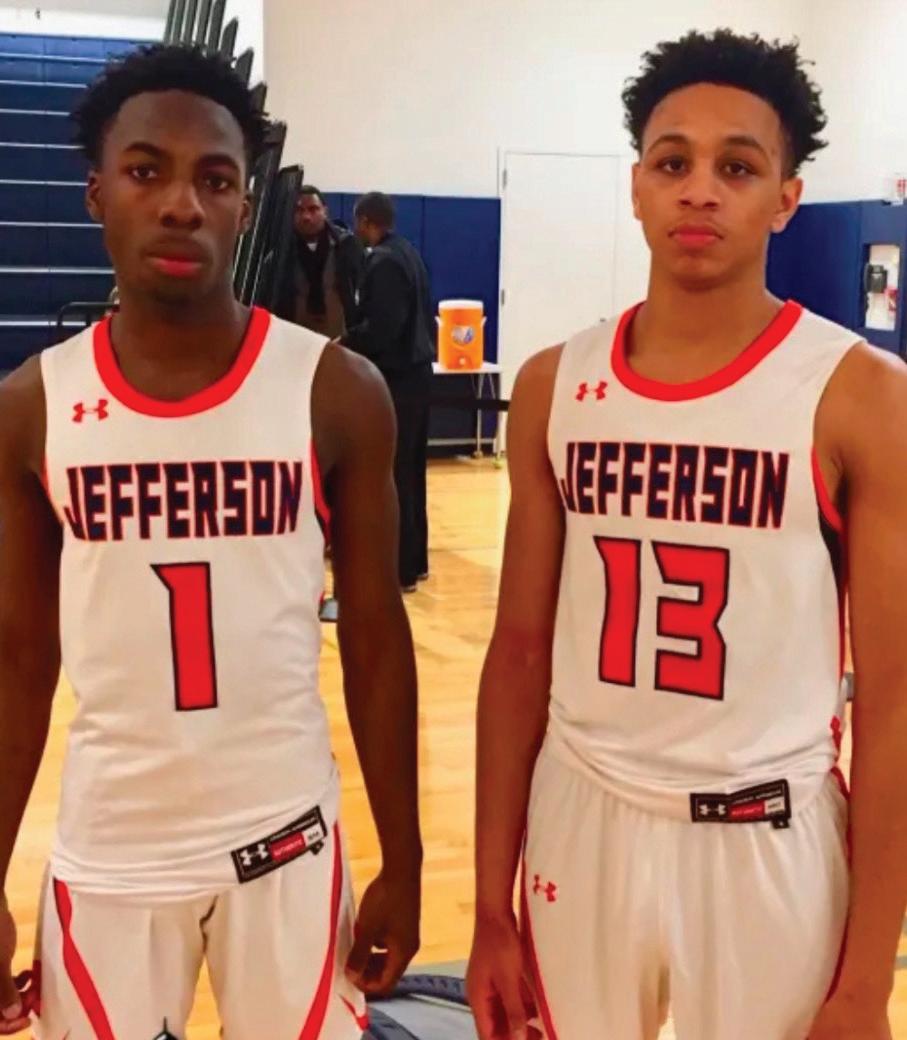
Welch was named a NJCAA Division II All-American, All-Region XV Player of the Year and First-Team All-Region. Blaine then recruited Welch, and he transferred to SUNY Plattsburgh.
“He’s got a great feel for the game. He’s got a great sense to find guys and
create shots for his teammates and he’s also got an ability to score at a high level himself,” Blaine said. “Kareem does a great job understanding where we can attack, where he can put some pressure on a defense and find a shot for his teammate or himself.”
When recruiting from junior colleges, Blaine is simply looking to add quality players from all backgrounds to a quality program.
“We have an opportunity when a young man who maybe needed some time to get himself acclimated to be a student athlete at the college level, does so at a two-year school, or maybe he does so because of a cost benefit or cost savings option for the first couple years over four-year school, but we believe that he’s a quality player, a quality student and somebody we wanted to add to the team,” Blaine said.
Another advantage of recruiting from the junior college level for Blaine is that he has an opportunity to see how players adjust to the farther collegiate three-point line before they come to his program.
“Sometimes you can’t quite fully assess the time it might take to adapt and adjust for a high school student, but if you’ve got a transfer student, they’re already familiar with playing with those dimensions and that consistency,” Blaine said.
Junior colleges give athletes an opportunity to get to a school that is the right fit for them, even if their path looks different from the average athlete.
“We’ll recruit any student athlete that we think is a fit to be a contributor to our program in all phases, whether it’s a grad transfer, a four-year school transfer, junior college transfer, or first year from high school,” Blaine said.
Welch has been proving himself capable of a high level of play at the DIII level, and has had the opportunity to do so next to his old teammate, Tabb.
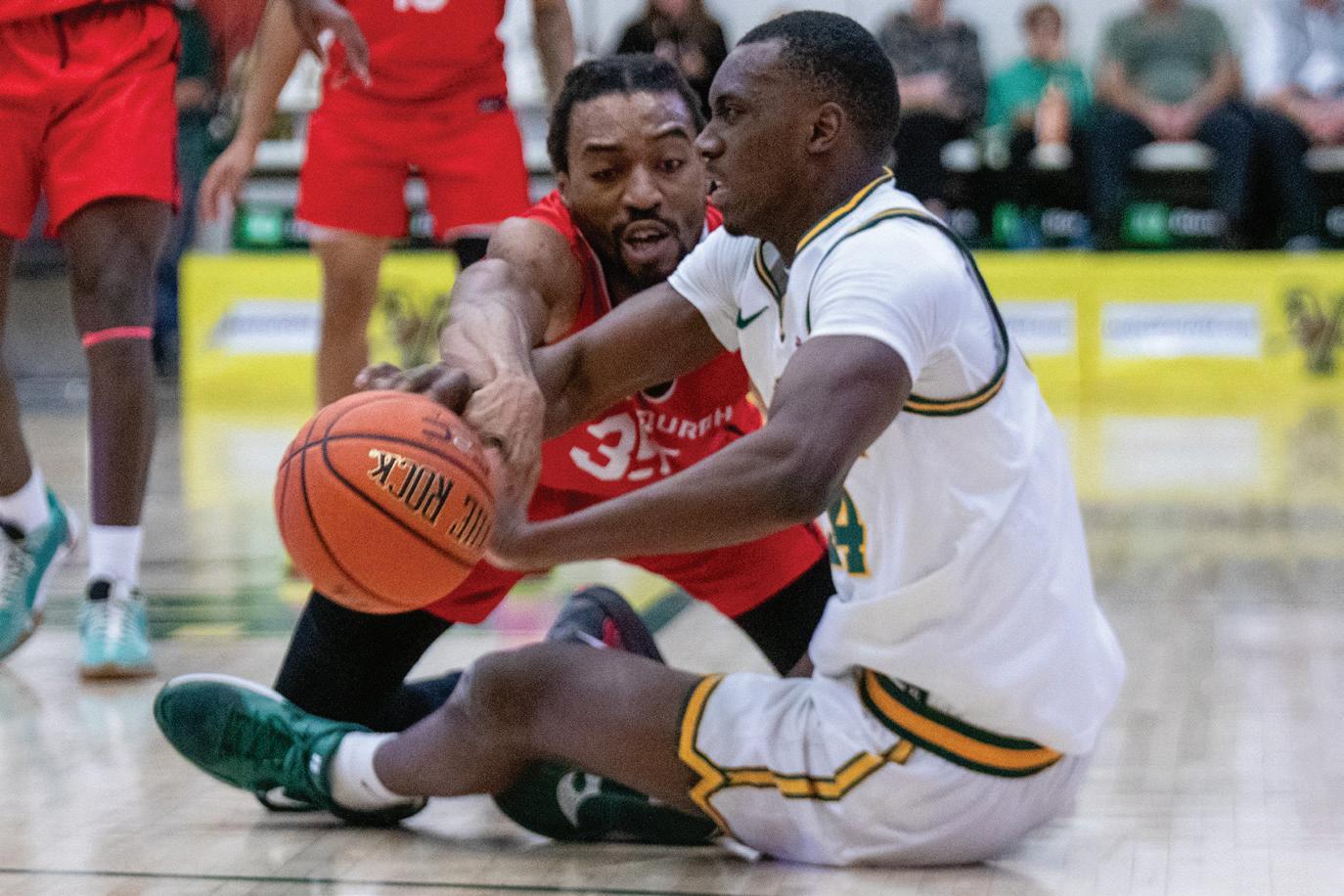


BY COLLIN BOLEBRUCH Editor in Chief
The ultimate privilege of my college career has been serving Cardinal Points. My six semesters with the independent student-run newspaper have taught me just how important the publication is to SUNY Plattsburgh’s campus. I graduate this December, leaving it with some very trusted hands. Cardinal Points has served the student body for decades, and since 1997, has acted as an independent media organization. Our newspaper is the only way for students to receive unrestricted and relevant news.
In the news section, Cardinal Points publishes weekly coverage of the Student Association. The SA uses student money and makes decisions for the student body. A very small percentage of the student body attends their meetings — it’s our responsibility to inform you on how your money is spent.
In the news section you’ll also find event coverage, issue reporting and features of groups and individuals on campus. Everything in the first few pages is meant to enhance your experience as a student.
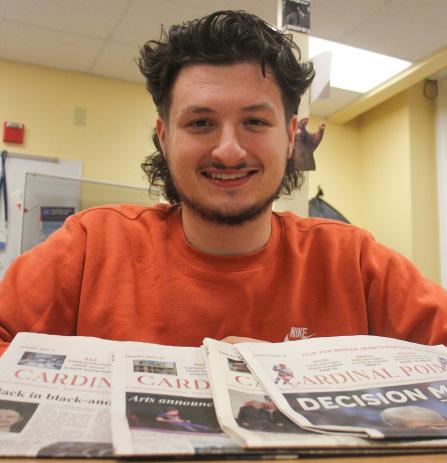
In the past, Cardinal Points has challenged SUNY Plattsburgh’s leadership — we’re a tool for you to express yourself.
Any enrolled student can join or contribute to Cardinal Points. The paper does not undergo prior review by a SUNY Plattsburgh staff member. Everything published by our paper is en-
tirely decided by students and there is no school censorship.
Cardinal Points also features student creativity in the arts and culture section. There, you can find theater productions, club highlights, student artist profiles and more. We are the best resource for artist exposure on campus.
BY NADIA PASCHAL Opinion Editor
There are two major life lessons that I learned during my time here in Plattsburgh. The first being that things don’t always turn out the way you expected. The second is that when that happens, it’s OK.
I started college as an ecology major trying to pursue a lifelong dream of mine. However, no matter how hard I tried, I struggled with the classes. Math and science were not my forte and it felt like I was relentlessly trying to force a square peg into a round hole.
Eventually, I had to make a change knowing that was the only way I was going to graduate. I changed majors hoping I could pivot to social work eventually. I grew burnt out quickly and became disillusioned with college entirely.
I needed to try something new and made the leap to finally join Cardinal Points. It was something I had always wanted to try but never felt like it was relevant to my major.
I spent one semester as a writer for the arts & culture section and I was terrified the whole time. I had no idea what I was doing, or how any of this really worked. To my surprise, I was nominated to be the opinion editor in the coming semester despite only writing one article for the section.
After three semesters being a part of the Cardinal Points staff, I can confidently say this was the best decision I’ve ever made. Writing gave me a purpose and I tapped into the
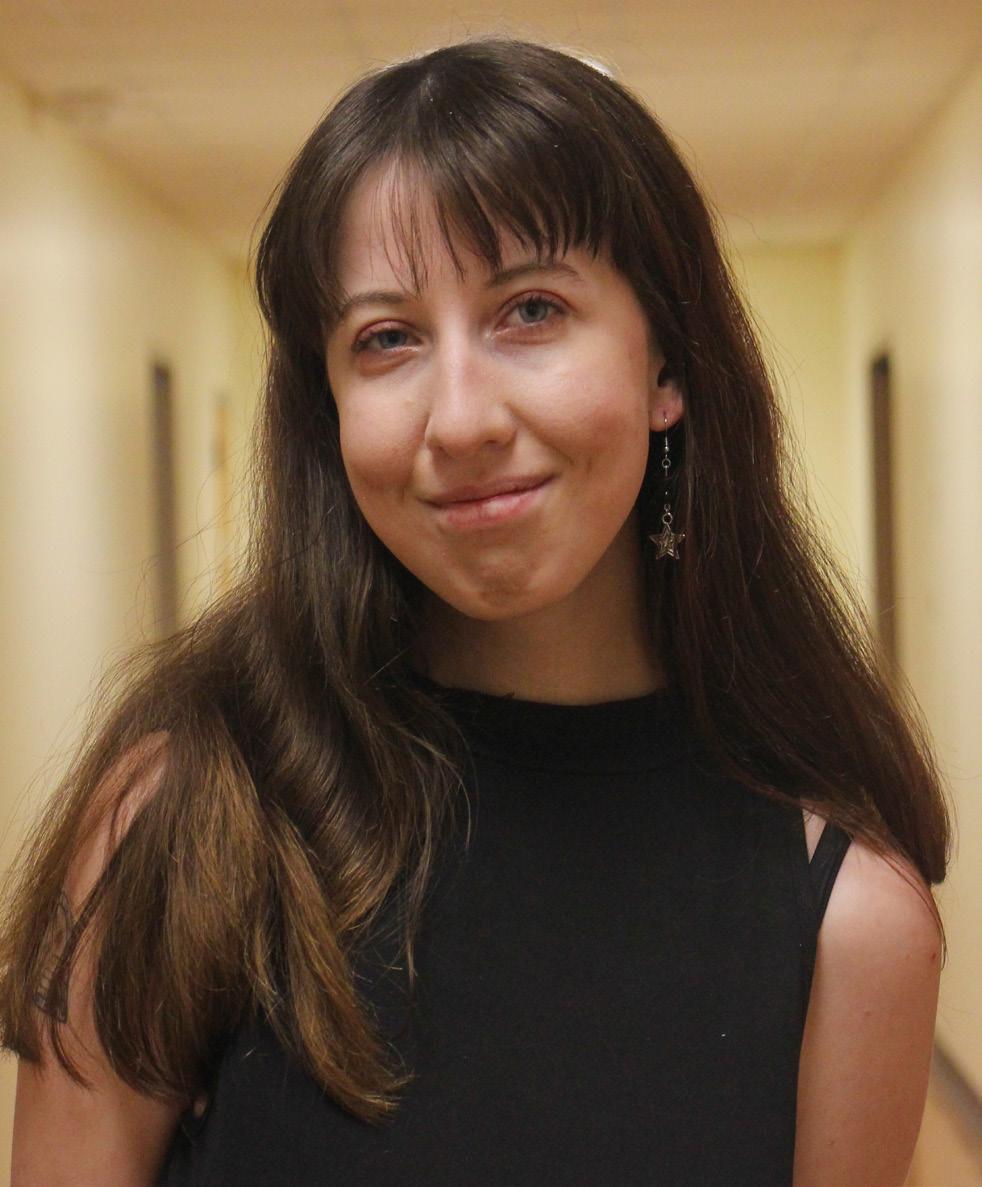
creative side of myself that I hadn’t allowed to flourish before. Even through all the long, tiresome nights spent in the office, I knew I was in the right place. It was rewarding to see each article I wrote and every page I designed come out every Friday. It gave me a feeling of success I hadn’t felt before and a sense of accomplishment. It has truly been an honor to serve as the editor for the opinion section. I have tried to make it both a place where students can safely vocalize how they feel as well as something entertaining — a way to get their minds off the daily stress we all face. As saddened as I am to part ways with the opinion section and leave it behind, I know it is in excellent hands and look forward to reading each week, even if I no longer am a student.
I am forever grateful to the entire staff at Cardinal Points, who have been there for me every step of the way both personally and professionally. I have learned so much from each of them, and have been constantly inspired by them and the passion they have for their work. Even on the most stressful days, I always look forward to coming into this home away from home, and seeing all of them, knowing we’re in this together.
The future is uncertain for me — I am unsure if I will continue journalism, as I want to write in a more creative sense. Wherever I end up, I owe it all to Cardinal Points which has broadened my horizons and made me into a better, more confident version of myself.
I spent most of my career in the sports section. Plattsburgh State supports 18 varsity sports and multiple club teams. The school publishes its own recaps of games and local media sparingly covers Cardinal sports.
Cardinal Points is the lone source for objective sports coverage on campus. The section also publishes regular features and profiles, bringing unknown stories to light.
The final section, opinion, is the best place for students to share their thoughts on topics ranging from hyperlocal to international. Opinion serves as a student loudspeaker and a diverse range of viewpoints are accepted.
Cardinal Points also utilizes the talents of students who have skills such as photography, videography, editing and coding. Cardinal Points is more than a newspaper, and any student can contribute to our student media organization.
As I look for my first post-graduation job, most of my resume is made up of Cardinal Points work. Like any student can, I worked my way through editor positions to become editor in chief. My role and work I’ve published with the paper are attractive to any journalism job.
Cardinal Points has made journalism so fulfilling for me. Through my years covering Cardinal sports, I’ve made hundreds of relationships with sources I’ve interviewed and teams I’ve covered. Those connections will be not just incredibly valuable in my career but, to me, are a major reason I enjoy the field so much. I’ve made plenty of friends and I still love meeting and learning about new people while telling their stories.
I spent hours and hours in the office every week with the same, small group of editors. I’ve been through so much with my colleagues and have learned so many things about myself and my field because of it. I will always have my fellow Cardinal Pointsers.
The paper has made major strides in the last few semesters, diversifying its coverage, improving its visuals and most importantly — returning to semi-regular print. I am so proud of everything we have accomplished together and it would mean everything to me if you helped it live on so strongly.
Email COLLIN BOLEBRUCH cp@cardinalpointsonline.com
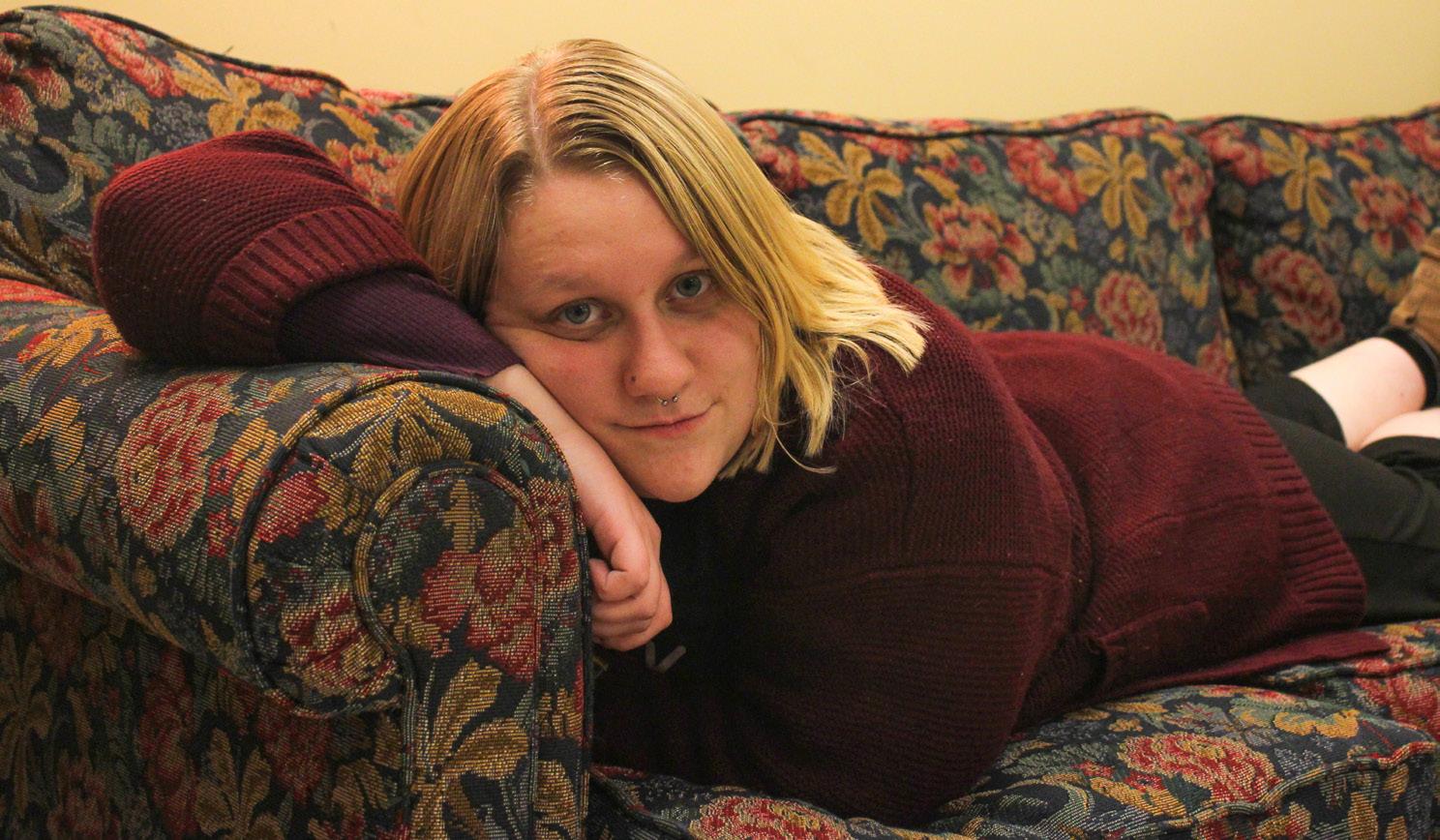
BY ALEKSANDRA SIDOROVA News + Managing Editor
For the past seven semesters, it has been my duty to share news with this campus. You’ve probably already read through the section I’ve run for four semesters, but here goes one last piece of news: My name is appearing in Cardinal Points, SUNY Plattsburgh’s student-run newspaper, for the final time.
As an international student, I could have chosen any university in the United States, but SUNY Plattsburgh called out to me through its student newspaper.
Sure, the weekly publication’s awards and Associated Collegiate Press Hall of Fame status were attractive, but I could sense that it was the product of dedication and passion that transcended anything someone could accomplish on their own. “Cardinal Points” and “single-handedly” don’t belong within a mile of each other.
I knew I would get involved as soon as I could: I wrote my first story for Cardinal Points in my second week in college and it’s an addiction that both supported and challenged me for three and a half years. What truly surprised me, though, was that my niche was news.
Russians don’t typically grow up considering journalism as a career path. It makes sense — parents aren’t likely to recommend a profession that, if you’re too good at it, could land you behind bars or end your life of “natural causes” before you start graying. Instead, journalism has to find you.
I realized I wanted to pursue journalism when my school introduced a short-lived student newspaper club. We produced only a handful of issues, but enough for me to catch fire. Suddenly, my writing skills that shone in essays but failed in fictional endeavors mattered beyond the silo of academia. All that other slightly scary stuff? We’re journalists; it’s an occupational hazard. Cardinal Points has given me everything we promise students when we promote participation in the paper at involvement fairs and class visits. My writing and photography improved, I see familiar faces everywhere I go and my portfolio has no shortage of work samples. What we don’t tell you, though, is that through this perseverance, you also find yourself. It’s been a pleasure and an honor to nurture this paper after my class inherited it from the editors of yore. But now, I am excited to see what the next batch of capable and dedicated storytellers will bring, and endlessly curious to see what my life would look like when I am no longer part of this weekly ritual. I could ponder infinitely where I would be without this campus or Cardinal Points, but I don’t play that game. I share only what I know to be true, and that is that I have flourished here. SUNY Plattsburgh, thank you for supporting our work, engaging with us and helping us tell your stories. Please keep that energy up as the board once

BY NADIA PASCHAL
Opinion Editor
For several years, there’s been efforts to get women into science, technology, engineering and math careers — commonly known as STEM. Despite this push to create more welcoming environments for women within these professions, there still seems to be a large stigma against them.
The first university in the United States to open its doors to women was Oberlin College in Ohio in 1837. For a long time, women had few options for studies, and often were pushed towards fields such as nursing and education.
The realm of higher education has drastically changed for women, as women currently make up about 57% of the undergraduate population across the United States, according to the Women’s College Coalition.
Despite the progress that has been made, women in STEM programs still face certain challenges and assumptions made by their male counterparts.
Kayla Algae, a junior computer science major at SUNY Plattsburgh, said that she has faced some of those challenges being in an “extremely” male-dominated field.
“Every female computer scientist I’ve met in Plattsburgh has been kind of on their own journey,” Algae said.
Algae also said that she has been in a class with only one other woman, and that there is a clear divide between them and their male classmates.
“There’s not a lot of interaction at all going on. It seems purposely done that way,” Algae said.
Whenever Algae or other female classmates had questions, the male students were usually dismissive, she said. Other times they would be condescending towards them despite being in the same courses at the same level.
Algae is nervous about graduating in 2025 and entering the professional field, as the unfair treatment will most likely be amplified. In fact, around half of the women in the tech force leave the industry by the time they’re 35, as reported by Accenture, a global services company.
Women make up only approximately a quarter of computer-based careers, according to the American Association of University Women. There are multiple reasons for this, including a lack of role models despite the push for more women in STEM, gender stereotypes and unwelcoming male centered workplaces.
Another explanation put forth by the American Association of University Women was that this kind of environment is fostered in early edu-
Every
female computer scientist I’ve met in Plattsburgh has been kind of on their own journey.
Kayla Algae
cation, as some teachers grade girls harsher than they would the boys. This can cause what is known as math anxiety.
The wage gap in STEM fields is noticeably different as well. In entry level positions alone, men earn around $4,000 more than women, according to the Stanford Graduate School of Business.
It’s disheartening to see and hear about the unfair treatment and prejudices against women in these fields, but Algae said that continuing to advertise to women that there’s a place for them in that community will possibly lead to a more equal balance.
Email NADIA PASCHAL cp@cardinalpointsonline.com
BY NADIA PASCHAL Opinion Editor
This week marked the most exciting point of the year for all music lovers —- the release of Spotify Wrapped and Apple Music Replay. For the past few weeks, people have been anxiously waiting to see who their top artists and most listened to songs were throughout the year.
Being a loyal Spotify user, I can’t speak too much on the statistics that Apple provided, but what I do know is that it’s gotten a better reception than what Spotify put out.
As November came to a close, and Wrapped still
hadn’t come out, Spotify users grew anxious and questioned when it was going to drop. It finally came out Dec. 4 and I was incredibly underwhelmed by what it was. I enjoyed seeing who my top five artists were as well as my top songs, but that was the extent of my excitement. Compared to previous years, this time around was lacking in many areas and did not provide any new features.
Last year, Spotify spoiled its users and included many interesting and visually appealing features in the 2023 Wrapped. It included a map that showed which city matched your taste in music, cards that

revealed what kind of listener you were, your top five genres and what month you listened to your top five artists the most. It also introduced video messages users received from their most listened to artist, which I loved and thought was so fun.
The only thing that was kept this year was the video message, which was exciting to see again, yet it did not make up for the overall lackluster experience.
Aside from the video and the standard statistics — top five artists, top five songs, amount of time spent listening and number of songs played that year — there was really only one feature included, which wasn’t anything new.
This year’s main — and only — feature showed how your music taste evolved throughout the year, and it looked really familiar.
In September, Spotify released a new feature called daylist, which generated playlists throughout the day based on what you usually listen to at that time of the day. It was clear that this year’s Wrapped took inspiration from that.
While it is fun to check the daylist every time it changes, I wasn’t particularly happy to see it in Wrapped for a few reasons.
For one, the novelty of it has worn off. Sure, it’s a
fun way to find new music, but the way they present it makes no sense. Each playlist is titled in the most bizarre and nonsensical way, using words that sound completely made up. To have this as the only feature is stale and disappointing.
Many Spotify users speculate that this year’s Wrapped isn’t as good as it once was because of the use of AI.
Last December, the company laid off more than 1,500 employees after failing to meet profit and user growth goals. Prior to that 600 employees were let go in January and another 200 in June.
Some have attributed these layoffs to the increased use of AI throughout the app, believing that this is how the company is dealing with the lack of staff while trying to cut costs.
While it’s unclear if that’s true or not, Spotify really missed the mark this year and upset many customers, especially after hyping up the release of Wrapped. From now until next December, I’ll still be using Spotify, but will be slightly annoyed every time I open the app.
Email NADIA PASCHAL cp@cardinalpointsonline.com

Cardinal Points has received the following awards from the Associated Collegiate Press (ACP):
ACP Hall of Fame Inducted in Fall 2010
All American
Spring 2018, four Marks of Distinction
Spring 2016, five Marks of Distinction
Spring 2014, four Marks of Distinction
Spring 2012, four Marks of Distinction
Spring 2011, four Marks of Distinction
Fall 2010, five Marks of Distinction
Fall 2009, four Marks of Distinction
Spring 2009, four Marks of Distinction
Fall 2008, four Marks of Distinction
Spring 2005, four Marks of Distinction
Spring 2004, four Marks of Distinction
Fall
Fall